Fantasy Books
Four Things I Think I Think: May 2025
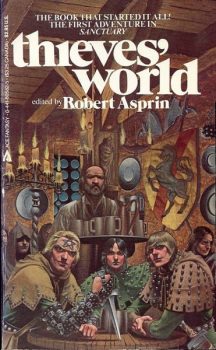 Time to share a few things I Think I Think.
Time to share a few things I Think I Think.
I mean, what’ the point of having your own blog column if you can’t share your opinion on whatever you want to? Right???
1 – The Black Company Remains One of My Favorite Series’
I’ve written multiple times that audiobooks fit my lifestyle these years. I still enjoy reading a print book, and the digital format has made a LOT of long out-of-print Pulp, available. But I listen to audiobooks while I work, write, game, drive, and even fall asleep. I get to stuff I’d not, otherwise.
Last year I listened to the entire Black Company series (minus Port of Shadows). I have read the entire thing at least three times through, and this was my first listen. Last month, as I was doing a couple of long runs, I decided I wanted to listen to The Black Company (book one). during them. And here I am a month later, on Water Sleeps, the second-to-last book (I only have Port of Shadows in hardback, so excluding that from the discussion at present).
The initial trilogy is definitely my favorite part. The last two, my least. But this foundational series in the dark fantasy/grimdark subfield, endures. It remains a terrific read/listen, and I’m excited that the new chapter kicks off this Fall with Lies Weeping (an internet scoop provided by your hard-working columnist last year, here on Black Gate).
The books are told from different characters’ viewpoints, so there are different narrators. They all work, but I like Marc Vietor (Croaker) the most.
If you’ve never read The Black Company, you’re missing out on one of fantasy’s best. If you have read it, you should definitely check out Fletcher Vredenburgh’s series on it, here at Black Gate.
2 – Thieves World Deserves ‘Rediscovery’ Through the AudiobooksI began reading the marvelous shared-world universe of Thieves World back in the eighties, not long after it started. I’ve re-read it multiple times, and I have almost all the spin-off books. MANY an RPG thief/rogue has been named Shadowspawn. And Molin Torchholder has been in play for clerics.
I was thrilled last year to discover that in August of 2023, Audible started carrying the first four Thieves World books! I immediately got all of them, narrated by Jonathan Johns. He sounds like Mackenzie Crook (Gareth in the British The Office; the one-eyed pirate in the Johnny Depp movies). He was an excellent choice.
They just dropped books five and six this month. Kim Morton is the new narrator for five. It’s a step down – his voice is kinda thin. It still works, but John was better. We’ll see how Noni Alley is with book six.
Listening to these audiobooks brings back the magic of Thieves World. I prefer the first books to the latter ones (the Beysib arrival felt like a shifting of the series, to me), so I’m happy these early ones are out. Thieves World was one of the early dark fantasy series, and a terrific multi-author universe. I despise Lynn Abbey’s short-lived reboot, and I wouldn’t listen to those books if they recorded them.
I am a fan of Janet Morris’ spin-off trilogy,with Tempus and the Stepsons fighting the wizards of the Mygadonian Alliance. All three came out last year on Audible, using an AI narrator. I think audiobooks should use human narrators. But I’m not intrinsically opposed to virtual voices. I assume cost is a significant factor; Several of Morris’ older books are now on Audible, with AI narration. I bought volume two, Beyond the Veil, after re-reading book one. It’s a bad narration. Now, I’ve listened to several bad human narrators. But this wasn’t very good. It definitely felt like a computer, not a human. I didn’t bother to get the third audiobook. And it’s the same voice used for one of her old Heroes in Hell books – I passed on that, as well.
But I’m definitely glad they have put out these Thieves World books, and I hope they do the whole original series. Definitely recommended to read and listen to.
3 – The Animated Clone Wars is Terrific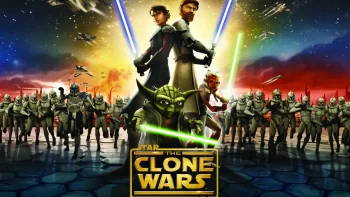 Star Wars Rebels was a really good series with a lot of lore added into the saga. I had seen a few episodes here and there of The Clone Wars, as well as a couple Bad Batch episodes. Clone Wars is my son’s favorite animated series in any genre: and he likes a lot of them. I decided to watch it from start to finish in an attempt to relate better to my teenager (good luck with that – I know).
Star Wars Rebels was a really good series with a lot of lore added into the saga. I had seen a few episodes here and there of The Clone Wars, as well as a couple Bad Batch episodes. Clone Wars is my son’s favorite animated series in any genre: and he likes a lot of them. I decided to watch it from start to finish in an attempt to relate better to my teenager (good luck with that – I know).
Man, this is a terrific series. Love all the lore added/expanded on; the visual style; the action scenes: it’s all excellent. Episodes are a bit less than 25 minutes I think, and easy to binge in small numbers. I’m into season two (there are seven seasons and one hundred thirty three episodes) and while I still find Jar Jar annoying as hell, I like everything about this series. The light saber fights are really cool.
If you like the Star Wars universe and haven’t seen this show yet, you are definitely missing out – like I was. And the Bad Batch was introduced near the end of the original show, and it’s a spin-off series you can follow up with.
There’s a Clone Wars ninety-minute movie that takes place right before the first episode of the Clone Wars series. It introduces Asohka as a padawan. I watched it after watching season one. That didn’t affect anything, and it’s definitely worth watching.
Highly recommend Clone Wars. And if you haven’t seen Rebels, it fills in some of the gap leading right up to the start of the first movie. And, the live-action Asohka series picked up the Rebels story line. Very recommended.
4 – Robert E. Howard Continues to Enthrall Me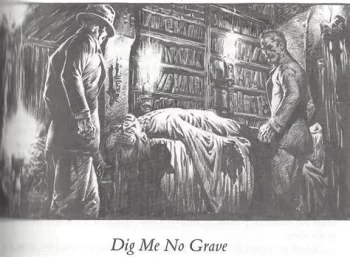 John D. MacDonald remains my favorite writer of all time – any genre. I’m overdue for another dive into his short novels, but that’s just not on tap at present. However, I am continuing to read and re-read my second-favorite: the pride of Cross Plains.
John D. MacDonald remains my favorite writer of all time – any genre. I’m overdue for another dive into his short novels, but that’s just not on tap at present. However, I am continuing to read and re-read my second-favorite: the pride of Cross Plains.
I’ve got the third and final Kirby O’Donnell post coming for the Summer Pulp series (there were only three stories). I’m sure 2026 will see me ruminating on the one Steve Clarney story. But as I re-read “The Curse of the Crimson God,” as always, I was in awe of Howard’s writing skill. His prose is fantastic. He writes battle as well as anyone I’ve discovered. But his use of words, relentless pacing, and facility for spellbinding the reader, feels fresh every time.
I have a post on his occult detectives, Conrad and Kirowan, ready for the Summer. Horror is not my thing, but Howard was a master in that genre, as well. My love of MacDonald goes back more than forty years – he was a master. But Robert E. Howard may be unequaled at what he wrote. Even the prose in his Conan stories rises above the common perception of Pulp, and sword and sorcery. I may not love every story he wrote, but I am rarely disappointed in the writing (Breckenridge Elkins is totally an exception).
If you haven’t discovered REH – or only know Conan – get a couple volumes in the fantastic Del Rey series (they used the original unedited texts) and discover a true American treasure.
Not 5 –I wanted the fifth item to be me praising the terrific documentary, Welcome To Wrehxam. Ryan Reynolds and Rob McElhenney bought the Welsh soccer (football) club in Wrexham, in 2001. The whole thing has been covered in a wonderful documentary. The first episodes of season four dropped earlier this month. I’m not caught up yet.
But it is SO watchable. The owners, the team, the staff, and the town – you will get invested in all of them. The boys have (sometimes painfully) plugged in a lot of cash, and reaped ongoing success. Ryan and Rob are really fun and likable guys.
I’ll talk about Wrexham in a future What I’m Watching installment.
Prior Ten Things I Think I Think
Six Things I Think I Think (March 2025)
Ten Things I Think I Think (January 2025)
Ten Things I Think I Think (December 2024)
Nine Things I Think I Think (October 2024)
Five More Things I Think: Marvel Edition (September 2024)
Ten Things I Think I Think: Marvel Edition ( September 2024)
Five Things I Think I Think (January 2024)
Seven Things I Think I Think (December 2023)
Talking Tolkien: TenThings I Think I Think (August 2023)
A (Black) Gat in the Hand: Ten Things I Think I think (August 2023)
5 More Things I Think (March 2023)
10 Things I Think I Think (March 2023)

Bob Byrne’s ‘A (Black) Gat in the Hand’ made its Black Gate debut in 2018 and has returned every summer since.
His ‘The Public Life of Sherlock Holmes’ column ran every Monday morning at Black Gate from March, 2014 through March, 2017. And he irregularly posts on Rex Stout’s gargantuan detective in ‘Nero Wolfe’s Brownstone.’ He is a member of the Praed Street Irregulars, founded www.SolarPons.com (the only website dedicated to the ‘Sherlock Holmes of Praed Street’).
He organized Black Gate’s award-nominated ‘Discovering Robert E. Howard’ series, as well as the award-winning ‘Hither Came Conan’ series. Which is now part of THE Definitive guide to Conan. He also organized 2023’s ‘Talking Tolkien.’
He has contributed stories to The MX Book of New Sherlock Holmes Stories — Parts III, IV, V, VI, XXI, and XXXIII.
He has written introductions for Steeger Books, and appeared in several magazines, including Black Mask, Sherlock Holmes Mystery Magazine, The Strand Magazine, and Sherlock Magazine.
You can definitely ‘experience the Bobness’ at Jason Waltz’s ’24? in 42′ podcast.
When Satire is Overwhelmed by Reality: Moon Missing: Edward Sorel’s Report on Future Events
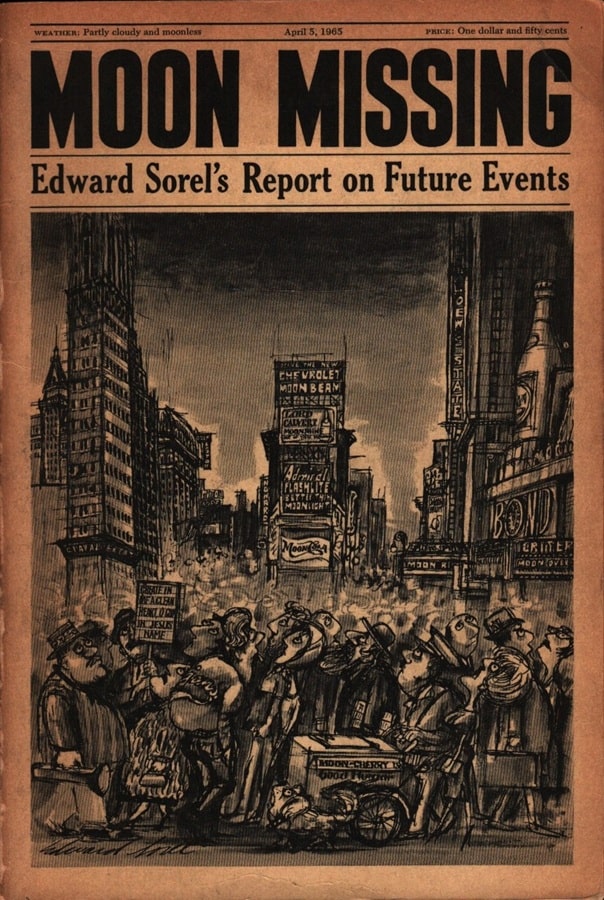 Moon Missing (1962)
Moon Missing (1962)
At about 1:46 am EST in the middle of the American night of April 4, 1965 the Moon disappeared. The American people were informed the next day at a Presidential news conference. President Kennedy was in no way responsible, said Allen Dulles, disgraced former CIA director but now Secretary of the Exterior, tapped to safeguard American interests in outer space.
Cartoonist, caricaturist, satirist Edward Sorel published Moon Missing in 1962. He had no need to prognosticate the future; the world around him gave him all the ammunition his ink Speedball B6 required.
So insistent are we today that the early Sixties were a more innocent time that the reality of the fear, paranoia, tension, and general unhappiness of the era can only be exhumed from period pieces. Sorel’s vision of the craziness ready to be let loose by a global event relied heavily on contemporary names in the news, but to find frighteningly many parallels in today’s world the names need only to be changed to modern equivalents.
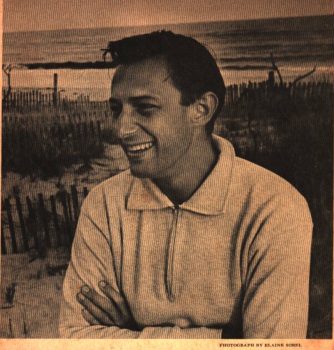 Edward Sorel in 1962
Edward Sorel in 1962
Born Edward Schwartz in 1929, Sorel found his artistic future while spending a year in bed as a child, much as young Richard Starkey found the drums as solace during a similar confinement. Still alive today and very much the Grand Old Man of caricature and cartoon satire with an endless catalog of important works, Sorel was a struggling freelancer in 1962. His early books for adults were such failures that even his own website doesn’t bother to mention them. To supplement the advertising work he was building a reputation for, he sent his satires out to every magazine that would accept such heresy, keeping his name before the public.
Moon Missing was excerpted in the motley foursome of Horizon, Sports Illustrated, Show Magazine, and Caterpillar. Caterpillar? Since the avant garde The Caterpillar Magazine didn’t debut until 1967 and the children’s magazine of that name was far in the future, I am forced to conclude he meant Caterpillar News and Views, the house magazine of the bulldozer giant. To imagine the improbability of that Venn diagram, try to conjure an appearance by R. Crumb in IBM’s THINK magazine. My brain boggles.
Moon Missing is set as a series of brief daily newspaper reports from the alternate future of 1965, the foundation Sorel uses for his plethora of illustrations. The double-page below sets the tone. New Yorkers parade down the sidewalk, oblivious to all but their smartphones – I mean, newspapers – while the news ticker accuses the Communists for the disappearance.
First to react is the Gallup Poll. The public is eternally divided on all issues.
And politicians are eternally hypocrites.
Clueless politicians can be found in every era, but the sweetener here is the reminder that J. Edgar Hoover used the FBI as a personal internal police, a part of the past we should never want revisited. “Involves national security.” Ring any recent bells?
Every bit of today’s battle of right and left wings already existed in 1965.
So much commentary is packed into these two pages alone.
Lest you think Sorel was himself nothing more than a muddle-headed liberal, be assured that he applied his gimlet eye to the Kennedy administration as well.
Fortunately for the economy, capitalists will always find a way to cope.
As world tensions soar, Kennedy and Khrushchev meet and sign a Mutual Moon Aid Pact, and talk about complete disarmament. And then the worst possible news.
 Look at the date. July 4. If you were Khrushchev would you think that was a coincidence? Or would even Americans? So much for world peace.
Look at the date. July 4. If you were Khrushchev would you think that was a coincidence? Or would even Americans? So much for world peace.
And Sorel, the old advertising guy, can’t help but add a coda that triggers the memories of us graybeards.
The book should have been a bestseller. Unfortunately for Sorel’s career, Moon Missing was published on the first day of the sensational and long-lasting New York newspaper strike. Few events speak more to New York’s absolute cultural dominance over the country in the early sixties. All other media took their cues from the New York papers. Anything not reviewed there had little chance of notice, much less success, elsewhere. The rave review in the Tampa Tribune didn’t save it. Kennedy’s assassination the next year thoroughly destroyed any chance of a later revival; reading about a living Kennedy presidency in 1965 would be little more than a sick joke, sicker than the ones Sorel actually told. (The hard-luck Sorel later created a poster attacking the war-mongering Cardinal Spellman of New York, but it was released the day the cardinal died. Live by satire, die by irony.)
The good news is that in 1963 Sorel was named art director of Monocle, a magazine of savage political satire that matched his sensibilities perfectly. From there he went to Ramparts, New York, and the National Lampoon, and was discovered by more mainstream magazines, seldom disguising his disdain for all that was wrong with society and politics. For me he will always be indelibly etched in my memory for his nsfw drawing of a rockette line of nude world leaders covering their private parts with large erect rockets pointed at the rest of humanity. If you dare, search for Robert Scheer’s Thinking Tuna Fish, Talking Death: Essays on the Pornography of Power, the most perfect title for a Sorel cover ever devised.
ETA: I have a coda as well and it may be less believable than Sorel’s satire. We live in a time when satire is overwhelmed by reality. Only datelines can differentiate them. While writing this article my eye was caught by a report on American First Policy Institute ambassador Kambree Nelson. Nelson was invited to the White House’s “new media” press conference for influencers where she gained attention for a particularly softball question, leading the curious to check her history. They quickly discovered that in October 2024 she sent a Xitter out to her 625,000 followers: “Has anyone seen the moon lately? I’ve been looking for 7 days.” When even some of her followers told her that the moon was right up there, she replied. “It’s not out. None of my friends in 4 states can find it.”
Tom Lehrer once proclaimed, “Political satire became obsolete when Henry Kissinger was awarded the Nobel Peace Prize.” Ironically, both he and Edward Sorel have lived to see this brave new world. Irony may not be dead, but satire is limping with both feet.
Steve Carper is the author of hundreds of articles on fascinating, if obscure and forgotten, tidbits of history, as well as the seminal book Robots In American Popular Culture. All of his websites are linked at SteveCarper.com.
Tubi Dive, Part VII
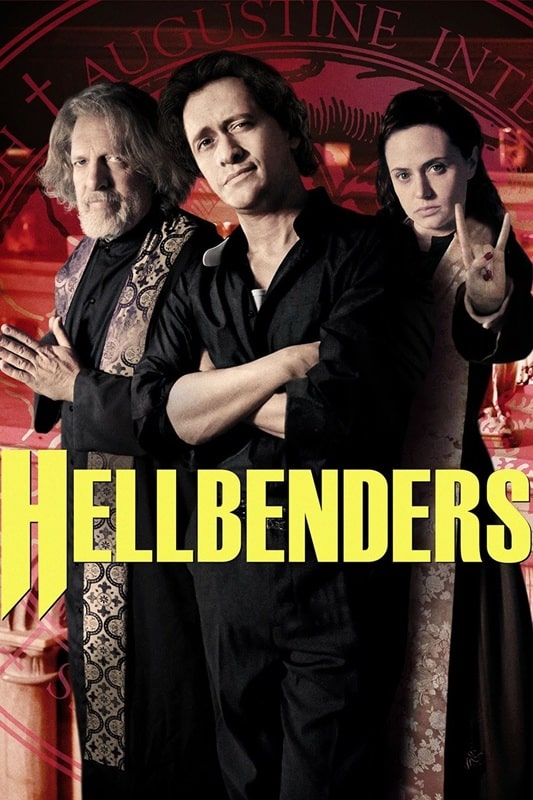 Hellbenders (Lionsgate, October 18, 2013)
Hellbenders (Lionsgate, October 18, 2013)
50 films that I dug up on Tubi.
Enjoy!
Hellbenders (2012)I really should have saved this for later, for my exorcism watch-a-thon What Possessed You, but the mere thought of not watching a Clancy Brown movie kicked off my hives.
Hellbenders is an unholy romp written and directed by J.T. Petty (who brought us The Burrowers, among others) based on the graphic novel of the same name.
It concerns a secret order of multi denominational priests who are trained to defeat unbeatable demons. They do this by sinning as much as possible, then inviting the demon to possess themselves before committing suicide and dragging the entity to Hell. It’s a fantastic premise, and the numerous references to their sins (ranging from stealing newspapers and having disparaging thoughts, to committing adultery and colourful blasphemy) is a lot of fun. Priests aren’t sent out on exorcism missions if they’re not guaranteed to go to Hell.
Clancy Brown plays Father Angus, the leader of this motley troop, and possibly the greatest user of profanity I have ever seen. This film is worth it for his swearing alone, but for God’s sake don’t do a drinking game based on the number of times he says cocksucker — you will die.
Everyone in this cast does a great job, and I especially enjoyed Dan Fogel as a punchy priest, and Stephen Gevedon as ‘Clint’ (a hilarious animated segment reveals why “Clint’ shouldn’t be a superhero name).
The possessions are fugly, the violence is daft and bloody, and there’s lots of biting off of appendages.
I really enjoyed this one.
9/10
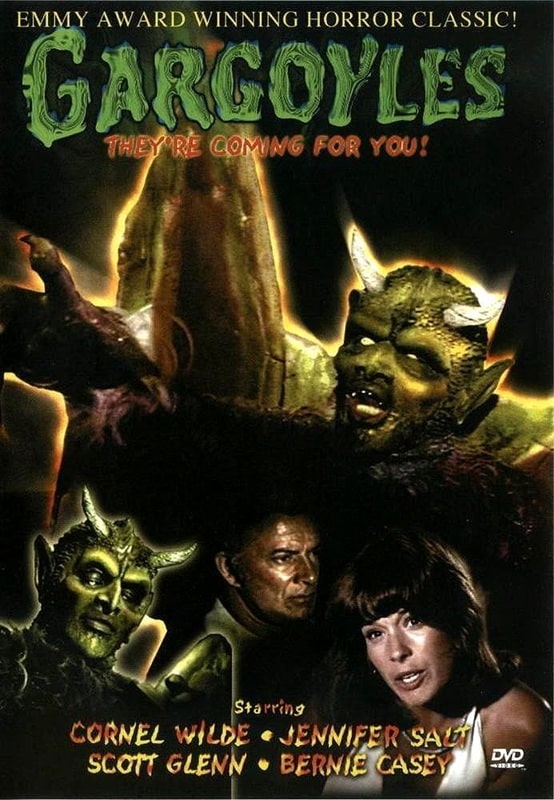
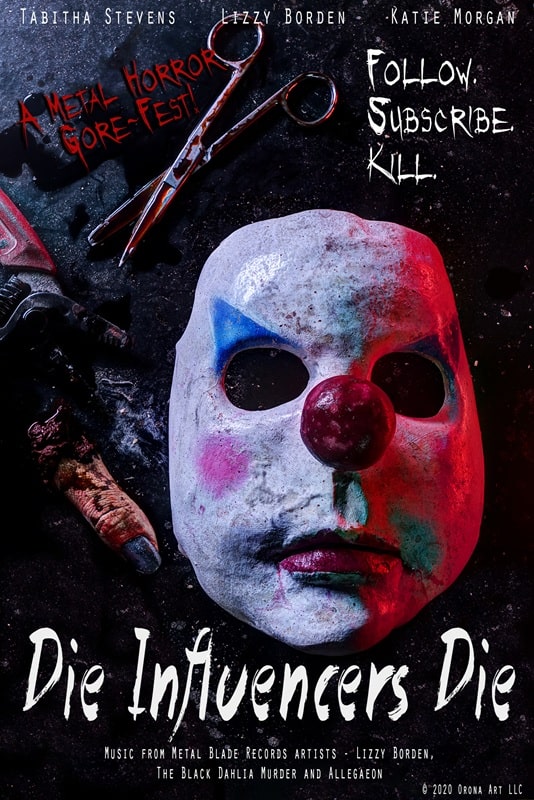
Gargoyles (CBS, November 12, 1972) and Die Influencers Die (Orona Art, 2020)
Don’t get excited, fans of the cartoon show (and potential Kenneth Branagh movie), this is a made for TV movie that was not bad for its time, and has developed something of a cult following.
Cornel Wilde and Jennifer Salt play Dr. Mercer Boley and his daughter, Diana. Dr. Boley is a leading authority on demonology, and his daughter feeds his obsession with trinkets she picks up around the world. They travel to a remote area in New Mexico called Devil’s Crossing — an area steeped in folklore and legend. There they encounter Uncle Willie, the owner of a roadside museum, who shows them a funky skeleton — before you know it, the gargoyles attack, and all hell breaks loose.
It’s a fairly tame flick, with a couple of slightly creepy moments, but the gargoyles don’t really stand up to scrutiny under the harsh lighting, and the action scenes are mostly choppy slow-motion. However, it licks along at a fair old pace, and it does feature Scott Glenn as a bad boy biker. You could say there’s an allegory blanketed under all of this regarding the treatment of indigenous peoples at the hands of settlers, but I ain’t here for no history lesson, mama.
Only recommended for the gargoyle-curious.
5/10
Die Influencers Die (2020)If you know me, there’s nothing I like more than seeing harm come to a) matadors, and b) internet pranksters, so this title obviously whetted my appetite.
Known in Germany as The Influencers, The (a Simpsons gag for loyal followers), this film is a low-budget schlock-fest with very little in the way of redeeming features. The nonsensical story concerns an abusive, toxic alpha-male influencer (a cross between Mr. Beast and Patrick Bateman) who wants to destroy the ‘careers’ of three rival influencers in order to ramp up his views. He does this by inviting them to a ‘haunted film studio’, then tries to give them dysentery with a made up energy drink that they are supposed to hawk for him. Little does he know that a malevolent demon is on site, and ready to chop up and eat anything in her path.
Said demon is the resurrected body of a model that was murdered by one of his assistants and stuffed in a fridge. She walks around at a jerky pace due to edited frames in a clown mask with duct taped nipples and a tutu. She’s apparently there for revenge, so why she kills the duped influencers (who did nothing to her) makes no sense. The whole thing is shot and edited like the most annoying music video you can think of, and is full of shock metal, partly due to the presence of Lizzy Borden as an illogical demon whisperer.
It’s annoying, grating and mean-spirited, and I can only recommend it to folks who like metal, plastic knockers and overacting.
3/10
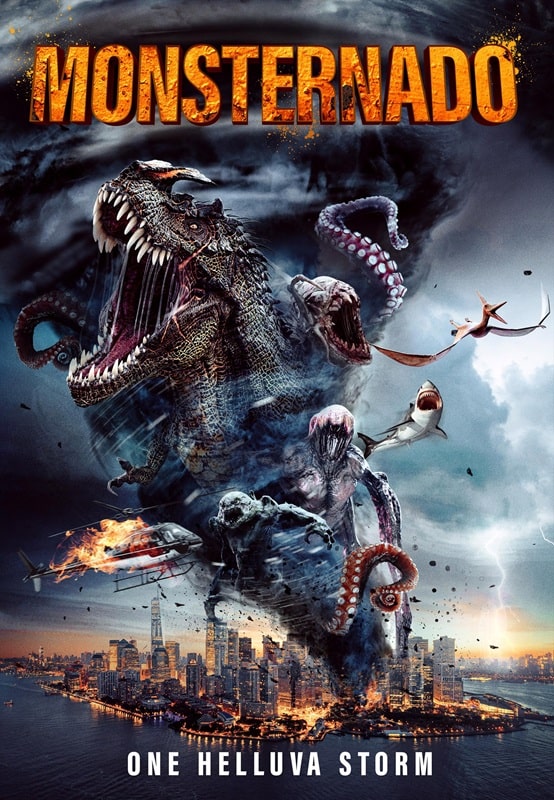
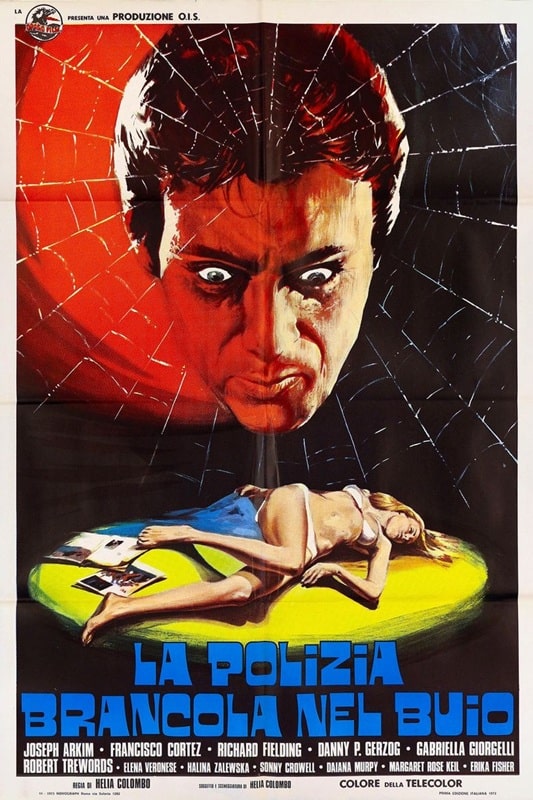
Monsternado (Uncork’d, November 14, 2023) and
The Police are Blundering in the Dark (O.I.S. Cinematografica, 1975)
Still on a kaiju high after Godzilla vs Kong, I foolishly tried to scratch my itch with this (potentially) fun flick. No sooner had it started, than I realized my mistake. It is an Uncork’d production.
Uncork’d makes The Asylum look like A24, but I bravely soldiered on.
Let’s get all the negativity out of the way. It’s not very good. The script is terrible, the acting is rubbish, and the effects are wonky at best.
I lied, here’s some more negativity. The thing that really irked me about this Sharknado knock-off was the filmmakers’ potential to do something really interesting with this idea. If you are going to have a plot reference mythical places like the Bermuda Triangle and Atlantis, then get some mythical monsters up in this windy shit.
As is, we are subjected to sharks, tentacles, gators, snakes, some token pterodactyls and aggressive scampi. If you’re going to spend the catering budget on CG, then at least make the monsters unique and fantastical.
I think it was supposed to take place in the US, but several shots of the Gherkin in downtown London, plus lots of dodgy American accents, gave up its true origins, and just keeping it set in England would have been a slight improvement.
It’s like I sometimes say to my children, “No, I’m not angry with you, just very disappointed.”
3/10
The Police are Blundering in the Dark (1975)Fancied a giallo, and this title caught my eye. It was originally titled The Salad Garden, and that would have made just as much sense, as there’s no actual coppers in this (ultimately rather dull) murder mystery.
The film has all the ingredients of a giallo, a POV killer dispatching young women, mandatory nudity, sexual repression, long talks around the dinner table, male hair product, but this one brings a science fiction twist to the proceedings. A wheelchair-bound photographer has invented a machine (the kind that goes wooo, woooo, and bathes the user in purple) that can photograph people’s thoughts — but this doesn’t really come into play until the end of the movie.
Instead we follow the apathetic investigation of a journalist looking for his missing friend while trying to pop the cherry of anyone he comes across. Being Italian and mid-70s, no one can be killed before their shirt has come off, in fact in the opening scene, the killer kindly tears his victim’s blouse so that she can gallop breastily through a copse before she becomes a corpse.
Possibly the most boring giallo I’ve ever watched, so I can only recommend it to fans of the Italian countryside, small cars, bosoms and lettuce.
4/10


Caddy Hack (Wild Eye Entertainment, December 10, 2023) and Blades (Troma Entertainment, 1989)
A double-bill, you lucky people. Here we have a pair of golf-related horror films that are on opposite ends of the quality spectrum.
Caddy Hack is bloody awful. It purports to be a comedy, but it is so desperately unfunny that I ended up hate-watching it for the final hour. The style of humor put me in mind of Mad Cow; self-referential, endlessly repeated (unfunny) jokes, deliberately rubbish effects, extreme mugging for the camera, horrible editing, and so on.
The story dispenses with the whole Caddy Shack plot, and instead focuses on the gophers, which in this steaming pile have been mutated by fertilizer. Throw in a Trumpy business owner, a thousand ‘ball’ jokes, and a Gremlins rip-off, and you have a recipe for a warm crap casserole. Avoid.
On the flip-side, Blades was an unexpected joy. I was honestly expecting a second-tier slasher featuring a lump of machinery, but I received a brilliant homage to Jaws, right down to the sound-alike music, story beats and set pieces. They played it straight, which elicited much more laughter from me than Caddy Hack, and a lot of thought was put into the direct adaptation of the original shark film. It gets better as the film goes on because you realize what’s coming up, and for this reason I wholeheartedly recommend Blades, especially for lovers of Jaws.
1/10 and 8/10 respectively.

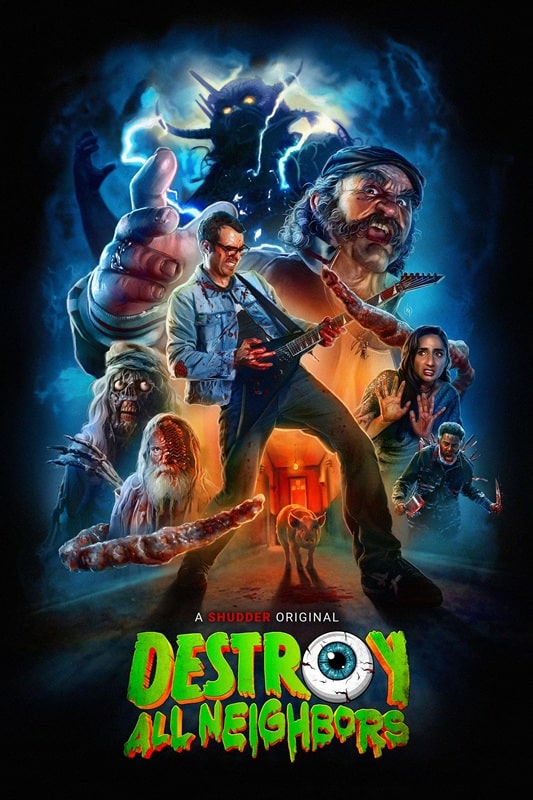
Psycho Gothic Lolita (Pony Canyon, September 4, 2010) and Destroy All Neighbors (Shudder, January 12, 2024)
You did it! You’re about to read your 50th rubbish review of a film to be found in the bowels of Tubi!
It took me a while to settle on a final film. I started on Screecher of the Lagoon, but I’m tired of badly shot and acted efforts. I also started The Door in the Woods, but it was too serious for me to get into (I’ll return to it one day). So here we are.
Psycho Gothic Lolita (original title: Gothic & Lolita Psycho) sounded like a perfect fit. After all, I love psychos, I love ‘gothic’ and, um, I love psychos.
The film perfectly encapsulates the vibe of this entire watch-a-thon; bonkers action, extreme gore, body horror, dubious sexiness, and the sort of deadly umbrella that would make John Steed wet his pants.
It’s a revenge tale as old as time. Yuki’s mom is brutally killed by a gang of five ne’er-do-wells in black windbreakers, and so she dresses up as a ‘gothic Lolita’ (I just learned this is a thing) and exacts revenge Kill Bill style. Actually, there’s a lot of Kill Bill in this, right down to an eyepatch-sporting hit woman called ‘Elle’. There’s even a spoon-bender (who’s more proficient at lifting up skirts) called Yuro Gerao — which elicited a hearty guffaw from me.
It’s daft, bloody, and a heap of fun. A good way to go out.
8/10
Bonus Flick! Destroy All Neighbors (2024)Not a Tubi Dive (this is streaming on Shudder/Prime), this one is a deliriously fun throwback to the bonkers weird-a-thons of the 80s. Think Society, Brain Damage or Freaked.
Jonah (MST3K) Ray plays Will, a musician who just wants to finish his prog rock album. As he descends into madness, many unfortunate and bloody events occur, and he ends up in a world of wise-cracking corpses and insane riffs.
It’s obvious everyone is having a great time making this, and Alex Winter chews the scenery under 50lbs of rubber as an East-European nightmare, while Ray is an excellent straight man to the chaos. Daft, messy and entertaining.
8/10
Here are all 50 films I watched on Tubi, and my three favorites — a handy guide for purveyors of slop.
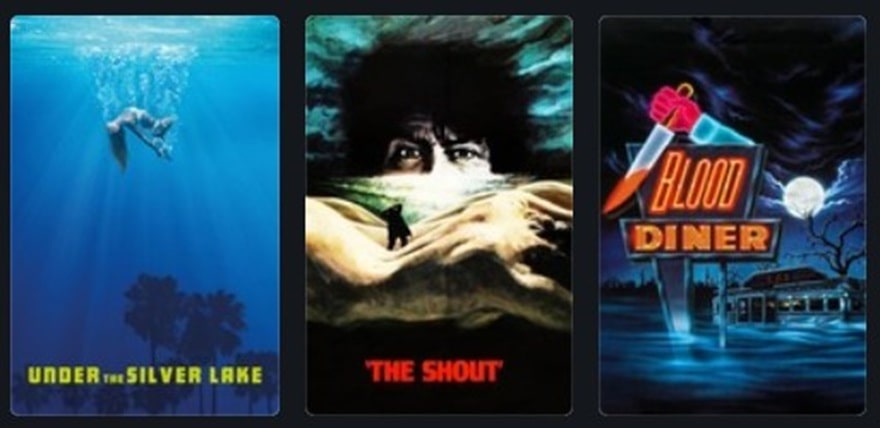 Tubi Dive — The Top Three
Tubi Dive — The Top Three
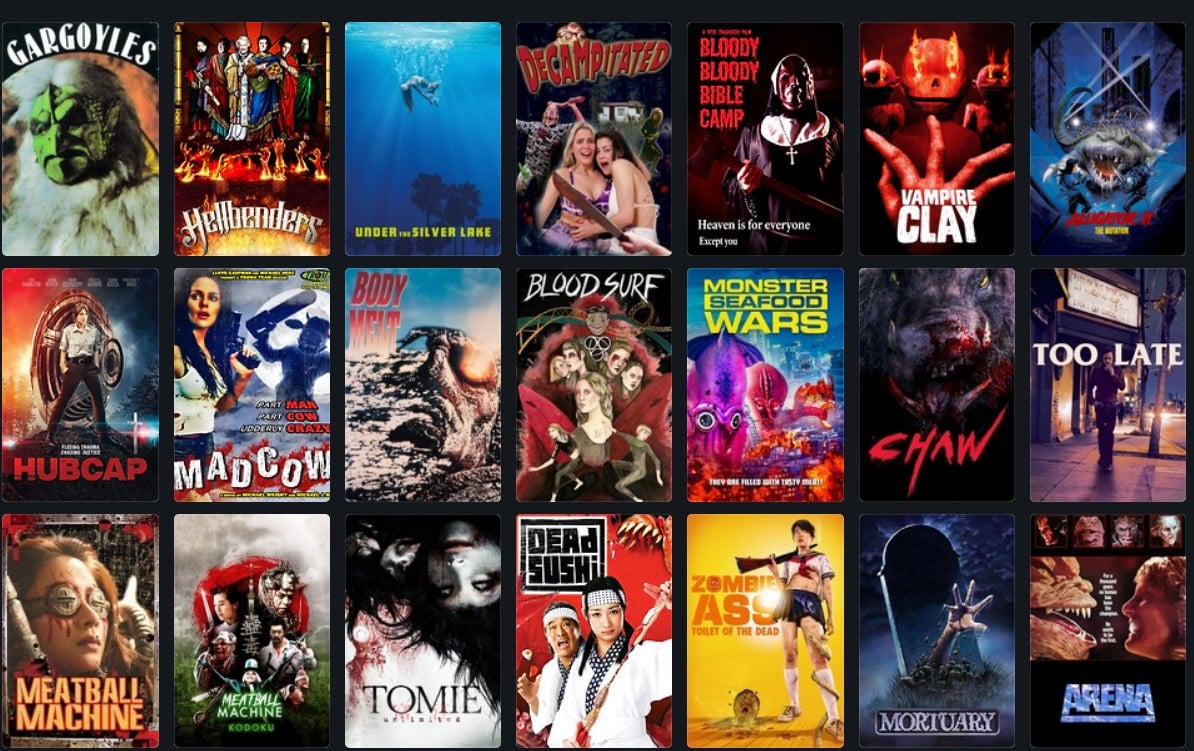 Tubi Dive 1
Tubi Dive 1
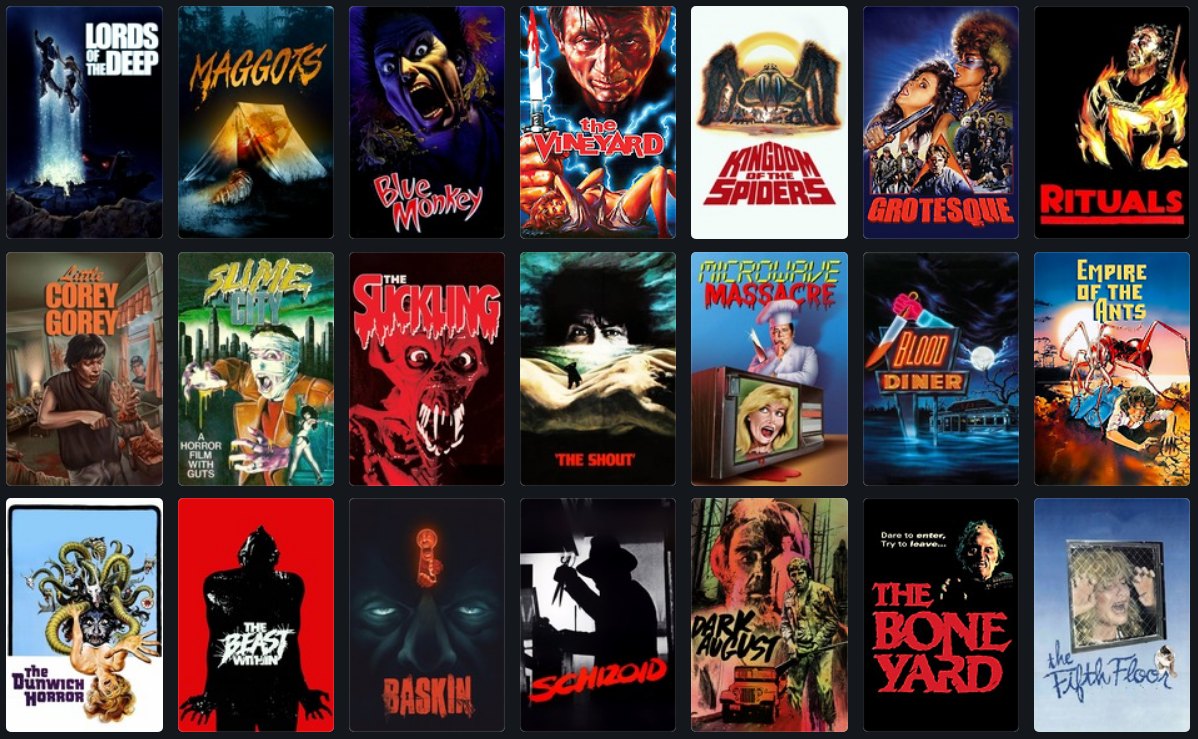 Tubi Dive 2
Tubi Dive 2
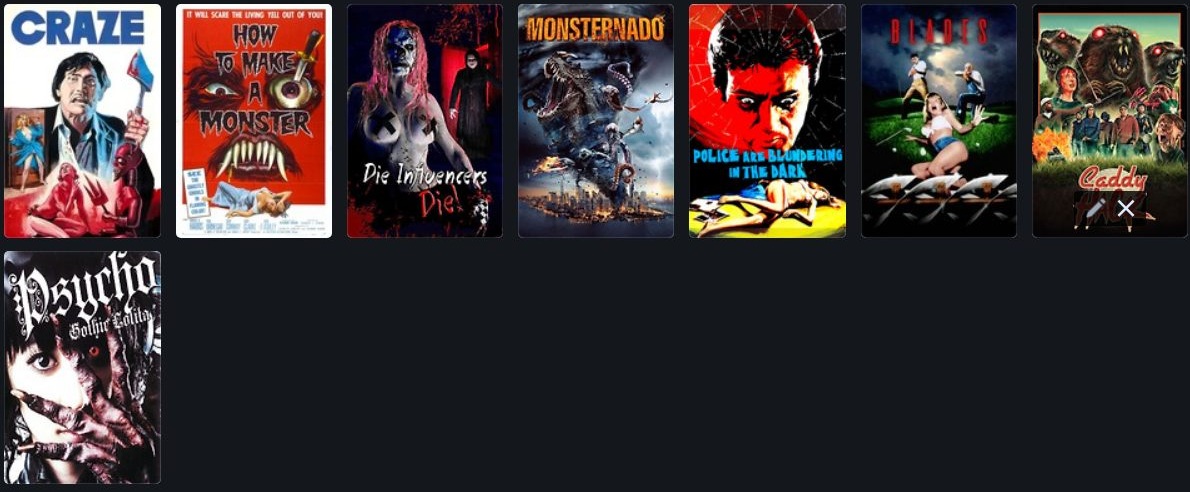 Tubi Dive 3
Tubi Dive 3
Previous Murkey Movie surveys from Neil Baker include:
Tubi Dive, Part I
Tubi Dive, Part II
Tubi Dive, Part III
Tubi Dive, Part IV
Tubi Dive, Part V
Tubi Dive, Part VI
What Possessed You?
Fan of the Cave Bear
There, Wolves
What a Croc
Prehistrionics
Jumping the Shark
Alien Overlords
Biggus Footus
I Like Big Bugs and I Cannot Lie
The Weird, Weird West
Warrior Women Watch-a-thon
Neil Baker’s last article for us was Part VI of Tubi Dive. Neil spends his days watching dodgy movies, most of them terrible, in the hope that you might be inspired to watch them too. He is often asked why he doesn’t watch ‘proper’ films, and he honestly doesn’t have a good answer. He is an author, illustrator, teacher, and sculptor of turtle exhibits. (AprilMoonBooks.com).
In Their Prime – 5 Scary Novels from the 1970s You Must Read
You can find and buy the books we recommend at LitStack on Bookshop at LitStack…
The post In Their Prime – 5 Scary Novels from the 1970s You Must Read appeared first on LitStack.
Tor Doubles #7: James Tiptree Jr.’s The Girl Who Was Plugged In and Vonda N. McIntyre’s Screwtop
 Cover for Screwtop by Maren
Cover for Screwtop by MarenCover for The Girl Who Was Plugged In by Peter Gudynas
The seventh official volume of the Tor Doubles series offers two stories by women. Although the previous volume offered an excerpt from Gwyneth Jones’ novel Divine Endurance is addition to the selections from Barry B. Longyear and John Kessel, this is the first time women have provided the headlining stories in the series. James Tiptree, Jr.’s The Girl Who Was Plugged In and Vonda McIntyre’s Screwtop, both stories about women whose freedom was curtailed, are collected in this volume. As with the previous novel, this volume also includes an excerpt, in this case a three chapter piece from Ellen Kushner’s Swordspoint.
The Girl Who Was Plugged In was originally published in New Dimensions 3, edited by Robert Silverberg and published by Nelson Doubleday in October, 1973. It was nominated for the Hugo Award and the Nebula Award, winning the former.
James Tiptree, Jr. was a pseudonym for Alice B. Sheldon. Although known to be a pseudonym, it was long assumed that Tiptree was male, and Robert Silverberg, who edited this story before Tiptree’s real identity became known, famously declared “[i]t has been suggested that Tiptree is female, a theory that I find absurd, for there is to me something ineluctably masculine about Tiptree’s writing. The truth of Tiptree’s identity was revealed in 1977. The Girl Who Was Plugged In is the first of three Tiptree stories to be published in the Tor Doubles series.
Reading The Girl Who Was Plugged In in 2025, offers a very different experience from reading it when it was initially published in 1973 or reprinted as part of the Tor Double series in 1989. Although it seems clear that there was a satiric element in this when it was initially published, this it is one of those rare pieces of science fiction which looks prophetic in retrospect. The situation Tiptree described has come, in part, to pass.
Set at an indeterminate point in the future, Tiptree postulates a world in which advertising is illegal. Her story focuses on a young woman named P. Burke, who suffers from pituitary dystrophy, a disease which leaves her disfigured and, as Tiptree makes sure the reader understands, seem like a monster. Following a failed suicide attempt, Burke is placed into essentially a VR chamber and hooked up so she can manipulate a remote body, which becomes known as Delphi.
Delphi is designed to be an attractive woman and work as what we would now call an influencer. Her sole purpose is to be seen, make headlines, and have people wondering what clothing she’s wearing, what products she’s using, and where they might be able to purchase them.
Tiptree’s story is narrated by an unidentified voice who describes the way the world treats Delphi and her adventures mixed with the way the scientists who care for an manipulate P. Burke’s body and inputs. The narrative choice puts a distance between the reader and the characters, which serves to reinforce the isolation P. Burke is in and the faux reality through which Delphi moves, even as she finds herself in a relationship with playboy Paul Isham, who completely misunderstands the situation. As Isham falls in love with the Delphi he perceives, P. Burke, in her isolation chamber, is unable to separate the reality of her situation with the idea that Paul really sees and loves her and she falls in love with him.
Isham realizes something is wrong about the situation and he manages to figure out where the lab P. Burke is being held is located. Despite his failure to comprehend Delphi’s true nature, he attempts to rescue her from the clutches of the scientists who are holding her, resulting in a less than happy ending for nearly all of the story’s characters.
The Girl Who Was Plugged In offers a world of influencers and controllers. Delphi way be the influencer the world sees, but her content is provided by P. Burke, who remains hidden from Delphi’s adoring fans. As the story progresses, the language used to describe P. Burke becomes more and more harsh, removing layer after layer of her humanity. In the end, it is neither the consumer, the influencer, or the reality behind the influencer that benefits from the situation, but rather the powers the set up the situation, making The Girl Who Was Plugged In a cautionary tale for a world that didn’t exist when the story was originally written and published.
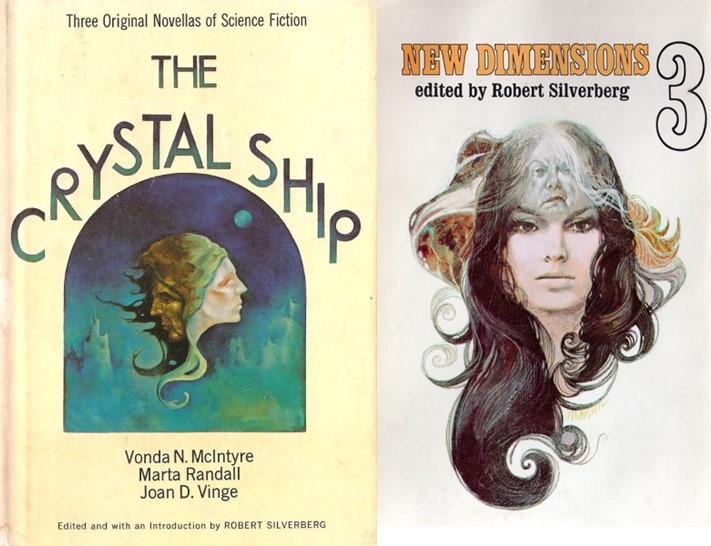 The Crystal Ship cover by Mike Mariano
The Crystal Ship cover by Mike MarianoNew Dimensions cover by Dennis Anderson
Screwtop was originally published in the anthology The Crystal Ship, edited by Robert Silverberg and published by Thomas Nelson in September, 1976.
Kylis is a spaceport rat, essentially a professional interstellar stowaway. A visit to the planet Redsun, however, ended her traveling days as she has been arrested and sentenced to penal labor at the Screwtop prison camp. Kylis strikes up a friendship, and eventually forms a family, with two other prisoners, Gryf and Jason, both of whom appear to be natives of Redsun.
Gryf is the product of tetraparents, a genetically crafted person who has the DNA of four separate parents. Meant to be highly intelligent, a glitch in the combination of DNA meant that he came out with strange coloring that set him apart from people. Gryf was also aware of Jason’s identity as a major philosophical author, which he shared with Kylis, although asking her not to let Jason know that they knew.
Focusing on Kylis, McIntyre depicts the horrors of the work camp. The throuple forced to the schedule set for them by the powers that be, represented in the camp by a guard called the Lizard. When their time allows it, they can seek solace in each other and form a family for themselves. This time almost makes their shifts working bearable.
The work is difficult. Screwtop is located on Redsun’s southern continent, which appears to be an uninhabited wilderness. Their job is to mine for geothermal energy, which is used to power the more massive and populated northern continent, where Gryf, Jason, and the majority of the prisoners are from. Naturally humid and hot, the mining process is even hotter and dangerous if precautions aren’t taken.
Once McIntyre establishes her setting and the characters’ relationships to each other, she is able to more fully explore the dynamics of the prison. Kylis reaches out to another woman prisoner, Miria, in a manner which may cause undue attention to be brought to her group. The Lizard approaches Kylis to extort not only sexual favors, but the implicit desire to have a child by her. The strength and purpose being in a supportive relationship with Gryf and Jason is demonstrated to have negative implications and it can be used against them.
In many ways, Screwtop feels as if it could be a prison story set anywhere, without the need for the science fictional elements. Kylis could merely be a runaway, Jason a dissident, and the workforce a regular mine. However, Gryf’s situation as the product of tetraparents becomes an important plot point. Although not fully explored, partly due to Kylis’s role as a narrator, his science fictional origin and upbringing, and his rebellion against it, focuses the story in him in the later pages as it becomes clear that his parents know of his whereabouts and may have the wherewithal to affect his release. More importantly, his way of dealing with the reality in which he finds himself is based on his unique situation.
Both Screwtop and The Girl Who Plugged In focuses on individuals who are trapped by other people, Kylis has more agency that P. Burke and the relationship Kylis has with Gryf and Jason, although not based entirely on reality of knowledge of the others, is a more authentic relationship than the one between Isham and Delphi. Similarly, McIntyre does not place a distance between the story and the reader by the expedient of having her narrator a participant rather than an observer.
The cover for Screwtop was painted by Maren. The cover for The Girl Who Was Plugged In was painted by Peter Gudynas. At only 136 pages, this volume is the shortest in the Tor Double series.
 Steven H Silver is a twenty-one-time Hugo Award nominee and was the publisher of the Hugo-nominated fanzine Argentus as well as the editor and publisher of ISFiC Press for eight years. He has also edited books for DAW, NESFA Press, and ZNB. His most recent anthology is Alternate Peace and his novel After Hastings was published in 2020. Steven has chaired the first Midwest Construction, Windycon three times, and the SFWA Nebula Conference numerous times. He was programming chair for Chicon 2000 and Vice Chair of Chicon 7.
Steven H Silver is a twenty-one-time Hugo Award nominee and was the publisher of the Hugo-nominated fanzine Argentus as well as the editor and publisher of ISFiC Press for eight years. He has also edited books for DAW, NESFA Press, and ZNB. His most recent anthology is Alternate Peace and his novel After Hastings was published in 2020. Steven has chaired the first Midwest Construction, Windycon three times, and the SFWA Nebula Conference numerous times. He was programming chair for Chicon 2000 and Vice Chair of Chicon 7.
Book Review: The Knight and the Moth by Rachel Gillig
I received a review copy from the publisher. This does not affect the contents of my review and all opinions are my own.
 The Knight and the Moth by Rachel Gillig
The Knight and the Moth by Rachel Gillig
Mogsy’s Rating: 4.5 of 5 stars
Genre: Fantasy
Series: Book 1 of The Stonewater Kingdom
Publisher: Orbit (May 20, 2025)
Length: 400 pages
Author Information: Website | Twitter
I confess I had my doubts when I started this one. After all, my first experience with Rachel Gillig’s work, One Dark Window, was not the most positive. That book left me cold with its confused themes and scattered direction, yet the author’s strong writing and the premise of her latest novel intrigued me enough to give her another shot—and I’m glad I did. The Knight and the Moth delivered a beautiful story that features a clearer narrative, compelling characters, and a gothic romantic tone that simply clicked with me in a way her previous series hadn’t.
The novel opens by transporting readers to the haunting, isolated grounds of Aisling Cathedral, where six nameless girls have served as Diviners ever since being rescued as foundlings by the abbess. Revered as soothsayers, Diviners undergo a dangerous water ritual to interpret the future from visions received through dreams induced while they are nearly drowned. Among them is Number Six, once known as Sybil Delling, a young woman who has spent nearly the past decade enduring this process for the benefit of those traveling to Aisling seeking wisdom. Now nearing the end of her service, she and her five sister Diviners are looking forward to their lives of freedom once they leave the cathedral, until an unexpected visit from the “Boy King” Benedict Castor III throws everything into chaos.
Benedict, newly crowned and still in his late teens, has come for a reading to see what lies ahead for his reign. Among his retinue is his loyal knight, Rodrick “Rory” Myndacious, whose open contempt for the Diviners’ rituals immediately grates on Six. Her suspicion proves justified when she catches the king and Rory stealing water from the cathedral’s sacred spring, but instead of turning them in, she strikes a deal: in exchange for her silence, they must take the Diviners out on the town for one final night of revelry before their time at Aisling ends. Yet soon after this outing, things take a darker turn when the Diviners start disappearing, one by one. Fearing that something far more sinister is at work, Six flees the cathedral with Rory’s help, hoping to buy some time while she works to locate her missing friends.
Although romantasy is arguably its main selling point, where The Knight and the Moth truly stood out was in its immersive atmosphere and world-building which felt both eerie and mythical. The setting of Aisling Cathedral, where the Diviners are cloistered, is one that casts a gothic shadow over the early chapters, with its abbess and cryptic rituals shrouded in secrecy. The young women, who go by their numbers One to Six, have had their identities erased and their eyes covered, the better to train them to a life of obedience and reading the Omens. Besides each other, they only have the cathedral’s sentient gargoyles for companionship. But as if all this weren’t intriguing enough, it’s the hints of an even deeper magical ecosystem that intrigued me, particularly the supernatural creatures called sprites that populate the world. Though their appearances were brief, they added a wild, almost elemental energy to the setting, and I hope their lore will be further explored in the next installment.
With regards to the romance, the relationship between Six—AKA Sybil—and Rory is one that simmers quietly in the background while the story’s main events play out, and that’s just the way I like it. Not too slow and yet not so strong that it overwhelms the central plotline, it unfolds with natural chemistry between the two characters. Not quite a “hate to love” romance, theirs is a dynamic which begins with mutual disdain but gradually shifts into something more intimate and vulnerable, and while the sparks don’t fly right away, by the time they do, the emotional payoff is worth the wait.
I also want to note how rare it is to find a book where the side characters shine just as brightly as the protagonists. Sure, Sybil and Rory are the ones who carry the story, but in The Knight and the Moth, we have a supporting cast that’s every bit as unforgettable. Maude, an older knight who serves as both mentor and near-maternal figure to Benedict and Rory, steals every scene she’s in with her quiet competence and unwavering composure—grace that she even extends to Sybil. On his part, Benedict, or Benji to his friends, reveals he is so much more than his youth, displaying surprising depth while he struggles to live up to a crown he barely understands. And then there’s the gargoyle, Sybil’s childlike guardian who follows her from the cathedral and becomes equal parts comic relief and emotional anchor. Together, this group of characters create a rich network of relationships that elevate this novel far beyond a simple romantasy.
In sum, what a huge difference from my first run with Rachel Gillig! Where One Dark Window gave me the impression of stumbling around in the dark, The Knight and the Moth felt more like a confident step forward. Featuring themes that were more focused, characters who were more grounded, and a more memorable story overall, the book managed to balance atmosphere, mystery, and heart without losing its way. For readers who enjoy slow-burn character arcs and layered world-building with just a touch of gothic romance, this is an easy recommendation. I’m genuinely excited to see where this series goes next.
![]()
![]()
The Suspension Bridges of Disbelief
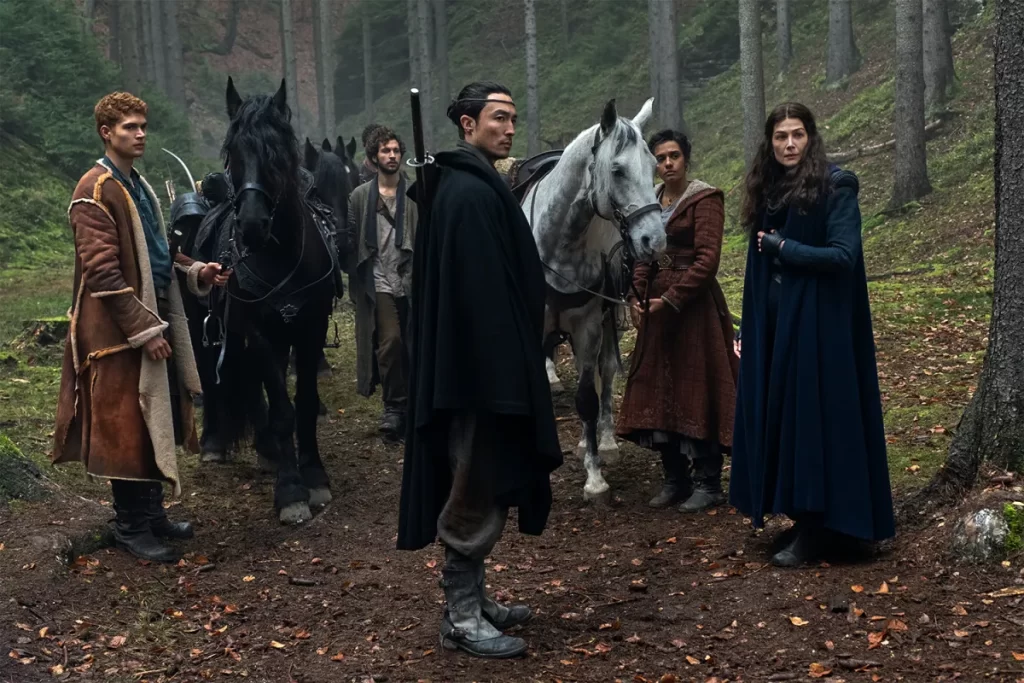 A friend and I have been watching The Wheel of Time adaptation on Amazon. Both of us expressed surprise not at the open casting, which we agree is wonderful, but at how that production choice plays out in small hamlets like Rand al’Thor’s “home town” of Two Rivers. After observing that every possible racial group is represented in this isolated, insular mountain community, my friend had an epiphany.
A friend and I have been watching The Wheel of Time adaptation on Amazon. Both of us expressed surprise not at the open casting, which we agree is wonderful, but at how that production choice plays out in small hamlets like Rand al’Thor’s “home town” of Two Rivers. After observing that every possible racial group is represented in this isolated, insular mountain community, my friend had an epiphany.
“I had to remind myself,” said my friend, “that if I suspend disbelief to accept that there’s magic in this world, then I might also have to suspend my disbelief in genetics.”
But isn’t it curious, how difficult this can be? The addition of magic in the Robert Jordan universe does not imply the generalized suspension of basic science, but the casting choices made in populating the Two Rivers absolutely does. Surely, under normal conditions, a group of people who initially look very different and then happily intermingle and intermarry over several generations would soon produce a population exhibiting mostly blended rather than outlying traits?
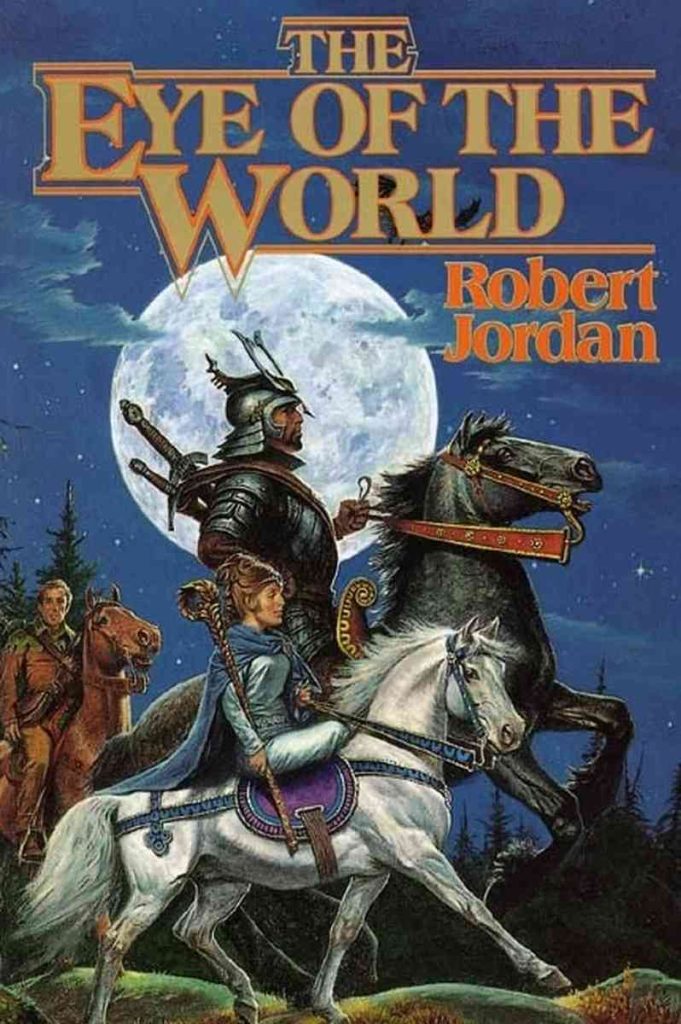 So, if genetics is getting tossed out the window, what’s next? Photosynthesis? The electron constant? Algebra?
So, if genetics is getting tossed out the window, what’s next? Photosynthesis? The electron constant? Algebra?
I once had a housemate who professed a hatred of musicals, both on stage and on film. He explained that he simply couldn’t get around the idea that when people feel a ton of emotion, they break into song. I thought (but did not quite say) that that’s exactly when people are most likely to spontaneously burst into song.
 Pro or con, musicals mark another instance where we either go along for the ride, suspending our disbelief when our heroes start warbling and trilling –– also when a brass band kicks in out of nowhere, playing (let’s say) “Seventy-Six Trombones”––or we cross our arms, huff and puff, and complain that musicals “aren’t realistic.”
Pro or con, musicals mark another instance where we either go along for the ride, suspending our disbelief when our heroes start warbling and trilling –– also when a brass band kicks in out of nowhere, playing (let’s say) “Seventy-Six Trombones”––or we cross our arms, huff and puff, and complain that musicals “aren’t realistic.”
But what is? Howard Shore’s exceptional score for The Lord of the Rings has nothing to do with realism. The Fellowship of the Ring is not accompanied on its journey by a traveling orchestra –– and if it were, wouldn’t we throw up our hands and declare the film to be entirely unbelievable?
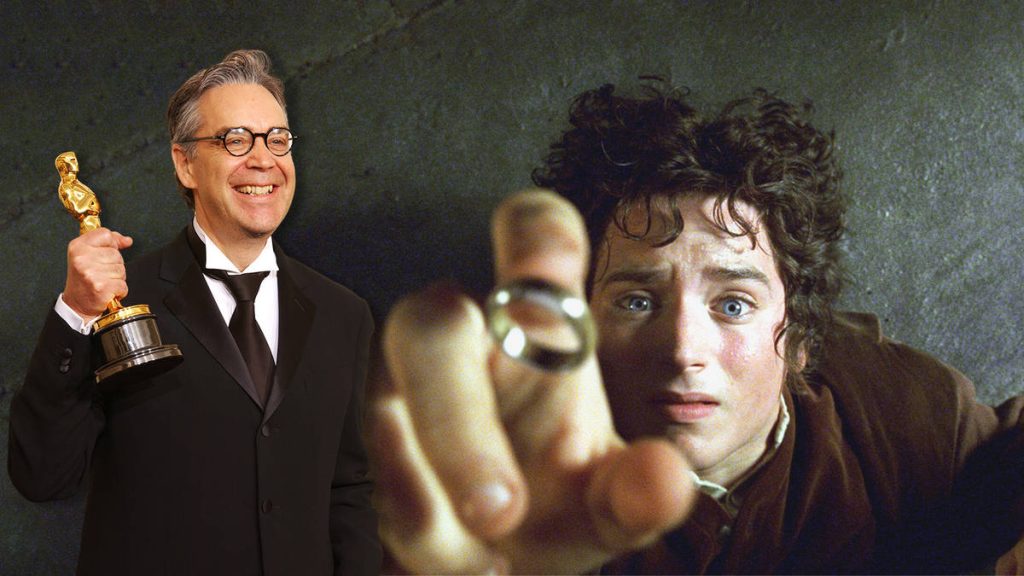 The easiest stunt to pull off when requiring readers or viewers to freeze-frame their disbelief is to offer up only a single element that’s not of this world. Lorrie Moore does exactly this in I Am Homeless if This is Not My Home (winner of the 2023 National Book Critics Circle Award) by asking us to accept that her hero’s deceased ex-girlfriend might want to embark on one final post-mortem road trip, bantering like a boss all the way. Everything else (well, almost everything else) is essentially normal, right down to the tarmac, the songs on the radio, and said girlfriend’s steady rate of decay.
The easiest stunt to pull off when requiring readers or viewers to freeze-frame their disbelief is to offer up only a single element that’s not of this world. Lorrie Moore does exactly this in I Am Homeless if This is Not My Home (winner of the 2023 National Book Critics Circle Award) by asking us to accept that her hero’s deceased ex-girlfriend might want to embark on one final post-mortem road trip, bantering like a boss all the way. Everything else (well, almost everything else) is essentially normal, right down to the tarmac, the songs on the radio, and said girlfriend’s steady rate of decay.
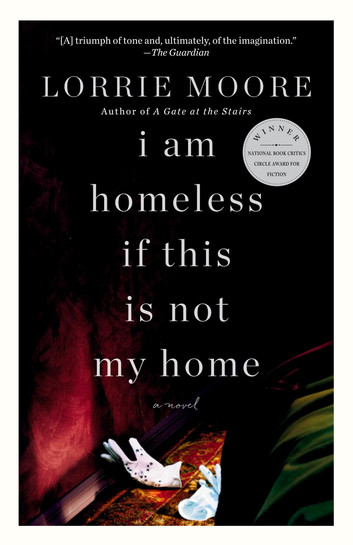 Sometimes, one encounters a writer who appears to be sticking to the world as it is, but elements of dream or otherness are allowed to intrude, often with unpredictable results. The reader is themselves suspended, learning with every new-turned paged to be watchful, wary of what is real and what is not. Kathleen Jennings takes this approach in Flyaway, where disbelief is not so much suspended as it is actively cultivated. John Crowley’s Little, Big proceeds in much the same fashion.
Sometimes, one encounters a writer who appears to be sticking to the world as it is, but elements of dream or otherness are allowed to intrude, often with unpredictable results. The reader is themselves suspended, learning with every new-turned paged to be watchful, wary of what is real and what is not. Kathleen Jennings takes this approach in Flyaway, where disbelief is not so much suspended as it is actively cultivated. John Crowley’s Little, Big proceeds in much the same fashion.
But in general, suspension of disbelief works best in an additive sense. The story-teller allows for some new power, something that piggy-backs on the world already known. For example, in The Fifth Season, N.K. Jemisin allows for “orogenes” who control stone, a supernatural power built on what we already accept of geology and plate tectonics. Similarly, in Marvel Comics lore, the character known as Storm can control wind and weather –– but her powers depend explicitly on phenomena with which we are already familiar.
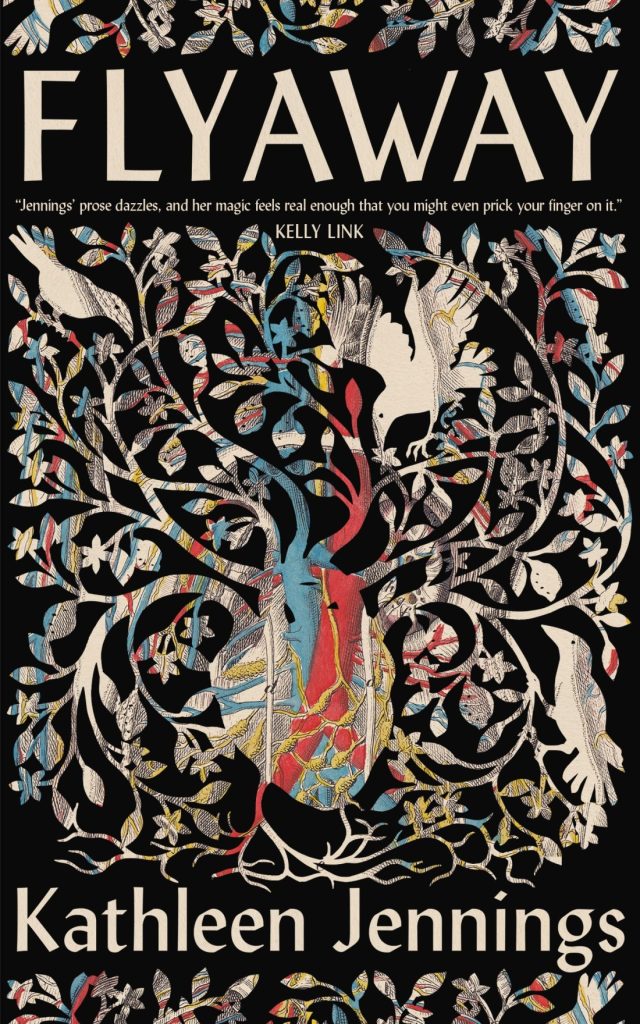 Even the finest works of the fantastic have their awkward moments. In HBO’s Game of Thrones, there’s a scene in which the Onion Knight, Ser Davos Seaworth, breaks young Gendry out of prison and sets him in a rowboat. When Gendry faces the wrong way, Ser Davos asks, “Have you ever been in a boat?” and Gendry answers, “No,” but the very next moment, he’s feathering the oars like a pro. All I can do is shake my head. Rowboats require practice: you’re facing the wrong way while steering, and each oar (long and heavy) functions independently. In the ocean, as Gendry is, every single wave impacts the oars differently. I’m forced to say that, as written, this charming, comic scene swan dives right over the cliff of believability. If poor Gendry has never rowed, all the royal blood in the world won’t help him. He’ll never get past the breakers, much less to the supposed safety of some far and distant shore.
Even the finest works of the fantastic have their awkward moments. In HBO’s Game of Thrones, there’s a scene in which the Onion Knight, Ser Davos Seaworth, breaks young Gendry out of prison and sets him in a rowboat. When Gendry faces the wrong way, Ser Davos asks, “Have you ever been in a boat?” and Gendry answers, “No,” but the very next moment, he’s feathering the oars like a pro. All I can do is shake my head. Rowboats require practice: you’re facing the wrong way while steering, and each oar (long and heavy) functions independently. In the ocean, as Gendry is, every single wave impacts the oars differently. I’m forced to say that, as written, this charming, comic scene swan dives right over the cliff of believability. If poor Gendry has never rowed, all the royal blood in the world won’t help him. He’ll never get past the breakers, much less to the supposed safety of some far and distant shore.
And yet, I’m perfectly happy to believe in three-eyed ravens and the faceless men of Bravos.
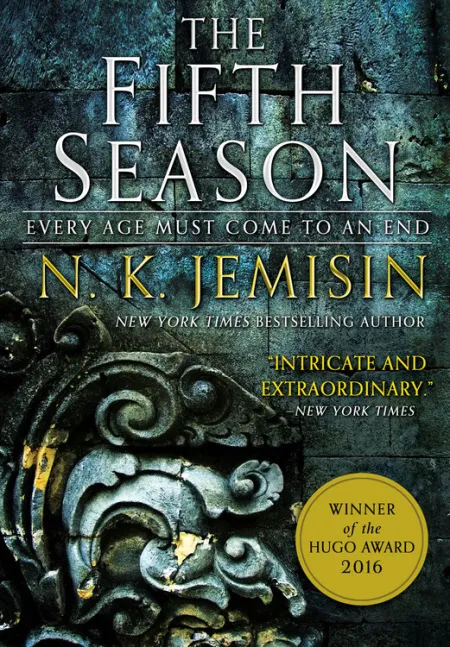 Perhaps the loftiest trick of all in the juggling game of disbelief is to remove some element that we have trouble imagining living without. Gravity, for example. The relative hardness and density of metal. Inertia. Strip away even one those three, and then try writing up a believable sword-fight. Good luck to ya’.
Perhaps the loftiest trick of all in the juggling game of disbelief is to remove some element that we have trouble imagining living without. Gravity, for example. The relative hardness and density of metal. Inertia. Strip away even one those three, and then try writing up a believable sword-fight. Good luck to ya’.
And this, perhaps, is why it is easier, when watching Amazon’s The Wheel of Time, to accept the One Power and way-gates and trollocs than it is to believe in a remote, mountainous outpost where the population covers just about every color of the human rainbow.
Magic, we buy (in part because it’s great fun to do so).
But reality?
Reality bites.
Onward.
Mark Rigney is a writer and long-time Black Gate blogger. His work on this site includes original fiction and perennially popular posts like “Adventures in Spellcraft: Rope Trick.” His new novel, Vinyl Wonderland, dropped on June 25th, 2024. Reviewer Rich Horton said of Vinyl Wonderland, “I was brought to tears, tears I trusted. A lovely work.” His favorite review quote so far comes from Instagram: “Holy crap on a cracker, it’s so good.” A preview post can be found HERE, while his website lives over THERE.
Spotlight on “The Will of the Many” by James Islington
In The Will of the Many, at the elite Catenan Academy, a young fugitive uncovers…
The post Spotlight on “The Will of the Many” by James Islington appeared first on LitStack.
Book Review: The Everlasting by Alex E. Harrow (by Swiff)

Book links: Tor Publishing Group | Goodreads
ABOUT THE AUTHOR: Alix E. Harrow is the Hugo Award winning author of The Ten Thousand Doors of January, The Once and Future Witches, and various short fiction. Her Fractured Fables series, beginning with the novella A Spindle Splintered, has been praised for its refreshing twist on familiar fairy tales. A former academic and adjunct, Harrow lives in Virginia with her husband and their two semi-feral kids.
Publisher: Tor Books (Expected October 2025)
Formats: Audiobook, ebook, paperback
REVIEW: The Everlasting is my favorite of Alix’s stories since the release of The Ten Thousand Doors of January. It is a love story told across a thousand years, again and again. It’s a story of ambition and ruthlessness, of bravery and cowardice, of servitude and freedom. It’s a lovely, emotional, and endearing read, showcasing Harrow’s wit and insightful observations common to her stories.
Told from an alternating second-person narrative (!) that echoes through time (!!), the story brings to mind Ken Grimwood’s classic Replay in all the best ways. Stories of this particular genre seem like they’d be especially difficult to execute, but Harrow does a remarkable job at harvesting all the seeds planted throughout the story.
I’m not going to divulge any further plot details as that would spoil some of the fun. Trust that the book is full of surprises and runs the full gamut of emotions, so prepare yourself for an immersive reading experience.
Sorry for cutting this short, but I have to go. If you need me, I’ll be waiting beneath the yew tree…
COVER REVEAL: God's Junk Drawer by Peter Clines (by Mihir Wanchoo)

Official Author Website
Pre-order God’s Junk Drawer over HERE
Read Fantasy Book Critic’s review of Ex-Heroes
Read Fantasy Book Critic's review of Ex-Patriots
Read Fantasy Book Critic’s review of Ex-Communication
Read Fantasy Book Critic's review of Ex-Purgatory
Read Fantasy Book Critic's review of Ex-Isle
Read Fantasy Book Critic's review of The Junkie Quatrain
Read Fantasy Book Critic's review of 14
Read Fantasy Book Critic's review of The FoldRead Fantasy Book Critic’s review of The Broken Room
Read Fantasy Book Critic Interview with Peter Clines
Read Fantasy Book Critic’s second interview with Peter Clines
Read I See Dead People by Peter Clines (Guest Post)
We are big fans of Peter Clines at Fantasy Book Critic and it's been a while since we have gotten to read some of Pete's fabulously twisted tales. So it is with great pleasure that we got news of the cover for God's Junk Drawer.
Peter's newest standalone book is being released by Blackstone Publishing on Nov. 11th 2025 and here's the snazzy cover for it featuring the talents of James T. Egan (Bookfly design).

Pre-order God’s Junk Drawer over HERE Add God's Junk Drawer on Goodreads
Official Book Blurb: Welcome to the Valley …
Forty years ago, the Gather family—James, his daughter Beau, and his son Billy—vanished during a whitewater rafting trip and were presumed dead.
Five years later, Billy reappeared on the far side of the world, telling an impossible tale of a primordial valley populated by dinosaurs, aliens, Neanderthals, and androids. Little Billy became the punchline of so very many jokes, until he finally faded from the public eye.
Now, a group of graduate astronomy students follow their professor, Noah Barnes, up a mountain for what they believe is a simple stargazing trip. But they’re about to travel a lot farther than they planned …
Noah—the now grown Billy Gather—has finally figured out how to get back to the Valley. Accidentally bringing his students along with him, he’s confident he can get everyone back home, safe and sound.
But the Valley is a puzzle—one it turns out Noah hasn''t figured out—and they’ll need to solve it together if there’s any chance of making it out alive.
Pulling from Earth’s past, future, and beyond, Peter Clines has created a complex, dangerous world, navigated by a dynamic ensemble cast, and a story that is thrilling as it is funny and heartfelt.
The Lost World
You may have heard about the recent statements made by Netflix CEO Ted Sarandos, a man who combines all the best qualities of Dr. Jack Kevorkian and Alaric the Goth in one natty package. As reported by Variety on April 28th, the streaming mogul declared that the precipitous decline in in-person movie attendance which began several years ago and has reached near-catastrophic proportions in the years following COVID is easily understandable; indeed, it communicates a clear message:
What does that say? What is the consumer trying to tell us? That they’d like to watch movies at home, thank you. The studios and the theaters are duking it out over trying to preserve this 45-day window that is completely out of step with the consumer experience of just loving a movie.
Relegating the theater experience that has defined the industry (to say nothing of wider American culture) for the past nine decades to the dustbin of history, Sarandos shined a dazzling light on our murky cultural landscape:
Folks grew up thinking, I want to make movies on a gigantic screen and have strangers watch them and to have them play in the theater for two months and people cry and sold-out shows… It’s an outdated concept.
Thank you, Ted, for clearing that up for us. I’m sure Scorsese and Coppola and Lee and Tarantino and Bigelow are happy to have the benefit of your sage counsel.
Lustily chomping his cigar and aggressively pounding his fist on the table (okay, I made that part up), the Netflix boss further said that the decline of movie theaters doesn’t “bother” him. He would be bothered, he added, if “people stop making great movies.”
Now I’ve seen the typical Netflix product, and you’ll forgive me if I think that Mr. Sarandos wouldn’t know a great movie if Bette Davis walked up with one in a steel film can and broke his nose with it.
 Fasten your seat belt, Ted — it’s going to be a bumpy night!
Fasten your seat belt, Ted — it’s going to be a bumpy night!
If you sense a certain bitterness in my remarks, you’re right, and that sourness stems less from my distaste for Mr. Sarandos and his cavalier attitude towards something that I love than from my suspicion that he’s right, damn it. Much as I might regret it, it does appear that the kind of moviegoing experience that many of us have taken for granted for our entire lives is rapidly — and probably irrecoverably — becoming a thing of the past.
Some hard-hearted realists might say that mourning the decline of moviegoing (as in actually going to the movies) is as silly, pointless, and socially and economically regressive as bemoaning the fact that the buggy-whip industry isn’t what it used to be.
As a practical matter, that might be so, but I still feel entitled to mourn the loss. Why?
To be moved, whether you are frightened or thrilled, brought to tears or to laughter, is an experience that you can certainly have in your living room, alone or with one or two other people, but that’s a fundamentally different experience than feeling those same emotions in a room filled with many other people, in a place dedicated (I almost said consecrated) to undistractedly watching the movie and nothing else, a unique space where no one (ideally) is chatting, looking at their phone, constantly moving around the room, or pausing the action while they stroll to the bathroom or go to the door to get the Grubhub order.
The darkness, the size of the space and the close physical proximity of so many other people, the scale of the screen and the depth of the sound, the sustained, even relentless nature of the experience (to say nothing of the fact that because you’re leaving the house to do it, it’s something that actually requires a degree of planning), and yes, the cash outlay — even if the movie itself is a negligible piece of fluff, these factors all combine to make the in-person experience itself larger and more weighty.
Of course, every difference I just mentioned is, for an increasing number of people, a bug and not a feature. In that, Ted Sarandos is right. More and more people do seem to prefer streaming at home over the older way of seeing movies. I know, I know, who has the time anymore? Who has the money? And what about the kids? Anyway, how many movies are good enough to warrant going through all the hassle?
I can’t argue with any of these objections; I feel their force myself. And yet I think we’re going to lose something precious if going to the movies becomes some sort of boutique experience limited to a few large urban areas. Sarandros himself pointed to this as a likely future, saying, “If you’re fortunate enough to live in Manhattan, and you can walk to a multiplex and see a movie, that’s fantastic. Most of the country cannot.” (I don’t know where Ted lives, but apparently he pictures the rest of the country as some sort of vast Hooterville where people wander among the cornstalks, desperate for entertainment.)
The “concept” dismissed as “outdated” by Ted Sarandos has played a major part in my life ever since I can remember. My parents loved movies and “going to the show” was one of my commonest experiences growing up; we literally did it all the time, and I continued to go on my own or with friends as I got older. I have countless memories connected with seeing movies in actual theaters or at the drive-in, and the record of my moviegoing forms a kind of alternate history of my life; it’s probably the same with you. Here are a few of my random moviegoing memories, and they’re all the more powerful because they’re not just mine; they’re collective memories shared in one way or another with the hundreds of people who were with me in the theater at those moments, and with the millions who experienced the same feelings when they saw the same movies in their own hometown theaters.
(You will notice that all of these movies are from the 60’s and 70’s. I have had memorable theater experiences in just about every decade of my life — Dead Ringers, anyone? — but these came to my mind first. Given my topic, it’s probably no surprise that I’m feeling excessively nostalgic right now.)
Summer, 1975. On vacation, visiting my cousins in Texas, we went to see something called Jaws. American movies and culture would never be the same. The shriek of delighted terror and terrified delight that burst from my fourteen-year-old mouth when that corpse’s head popped out of the submerged boat and scared the bejeezus out of Richard Dreyfuss, and me, and all the people surrounding me… well, I didn’t even hear myself, because my ears were too busy ringing from the identical sound that had just come from everyone else.
Quentin Tarantino has said that Jaws is the greatest movie (as opposed to the greatest film) ever made, because it delivers all those quintessential screaming/laughing movie pleasures more perfectly than anything else that’s ever been on the screen. If you were there in 1975, you can only agree with him.
Spring, 1979. My buddy Eddy’s mom said she would take us to the show to see a horror movie. She loved horror movies; she had already taken us to the drive-in to see The Brood and The Corpse Grinders. That’s what I call a great mom. When my mom (also a great mom) heard that Ruth was going, she said that she would join us. I told her that she really didn’t want to do that; the movie we were going to see was called Dawn of the Dead and it was not a Vincent Price campfest, which was what she was expecting from a horror movie. “You don’t understand, Mom — this movie has zombies that eat people!” She tsk-tsked me and insisted on coming along.
Five minutes in, in an apartment building infested with the living dead, a woman spots the shambling corpse of her husband; she runs up to him and embraces him, whereupon he takes a huge bite out of her neck as the blood gushes by the gallon. That woman was no more shocked than my mom, who grabbed her purse, stood up, and walked out of the theater. “I told you!” I shouted as she exited.
Spring, 1968. My mom gave me a day off from school. Why? She was going to drive me into Los Angeles so we could see 2001: A Space Odyssey at the fabled Cinerama Dome. (I told you she was a great mom.) She had told my teacher the day before that it would be “very educational.” The enormous curved Cinerama screen, the eye-popping special effects and overwhelming sound, the rapt enthrallment and utter bafflement of the audience — it has all stayed with me to this day.
As stunned people stood around on the sidewalk afterwards, there was a steady chorus of “What does it mean? Do you know what it means?” “I know what it means!” I recklessly piped up. As all those pairs of adult eyes focused on my seven-year-old self, I realized that I should have kept my big mouth shut. I didn’t know what the movie meant; I only knew that I had just had one of the greatest days of my life, and that I loved my mom.
Fall, 1979. At the Cinerama Dome again, my friend Sutton and I arrived at the last moment to see one of the first showings of Apocalypse Now, and the only seats left were in the first couple of rows. The Dome’s screen was eighty-six feet wide and thirty-two feet high; from our seats, it was like crouching at the foot of Mont Blanc. When the movie opened with a napalm strike, I felt like every millimeter of my optic nerves were on fire, and during the “Ride of the Valkyries” helicopter strike I crouched in my seat to keep from being eviscerated by a mortar round or decapitated by a helicopter blade, and I knew that everyone else in the theater was doing the same thing, even those who had more rational seats than we did (I told Sutton we should have left home earlier).
Every person in the audience knew that they were seeing something beyond the realm of the normal; we were witnesses to an outrageous, crazily ambitious, magnificent once-in-a-lifetime folly that no one there would ever forget. It was probably my supreme experience at the movies, and it wouldn’t surprise me if a lot of the people who were there that night almost forty-six years ago look back and think about it that way too.
One more. Fall, 1977. The movie is, believe it or not, Race for Your Life, Charlie Brown! This time Sutton and I left in plenty of time to get decent seats, and anyway, we didn’t have to drive as far to get to the theater. (The Cinerama Dome usually didn’t book Charlie Brown movies.) We had a Saturday with nothing to do and the only thing showing was this Peanuts movie. Well, why not? The theater was full to overflowing with kids — I didn’t see an adult in sight. We two high-school boys were apparently the oldest people present. Clearly this mediocre cartoon was a golden opportunity for parents to dump their spawn for a couple of hours and have a little time for… well, other stuff.
Things held fairly steady until the lights went down, and then pandemonium reigned. You’ve read Lord of the Flies? It was like that. The air was instantly full of flying popcorn boxes and other trash, and the soundtrack was drowned out by an insane cacophony of laughs, shrieks, yells, catcalls, arguments, profanities. You couldn’t see the movie; you couldn’t hear the movie. The aisles were filled with kids running up and down, falling, rolling, jumping, kicking, crashing. One kid sitting several rows forward took umbrage at something the urchin sitting directly in front of us said or did and came flying from his seat, and jumping astride the offender, pinned him in place and started whaling on him as the surrounding kids cheered; it was like having a ringside seat at Ali-Foreman. We were too stunned to intervene (others quickly did), and we bolted for freedom as soon as the final credits rolled, happy to escape with our lives, but I have never forgotten that kiddie matinee; it permanently darkened my view of human nature and blighted my belief in the possibility of building anything lastingly good in this world. And all it cost me was, what? Two bucks and a little gas money? Now that’s what I call a bargain.
Beat that, Ted Sarandos.
Thomas Parker is a native Southern Californian and a lifelong science fiction, fantasy, and mystery fan. When not corrupting the next generation as a fourth grade teacher, he collects Roger Corman movies, Silver Age comic books, Ace doubles, and despairing looks from his wife. His last article for us was Writ in Water: V.E. Schwab’s The Invisible Life of Addie LaRue
7 Author Shoutouts | Authors We Love To Recommend
Here are 7 Author Shoutouts for this week. Find your favorite author or discover an…
The post 7 Author Shoutouts | Authors We Love To Recommend appeared first on LitStack.
Get it While You Can: Manly Wade Wellman’s Cahena Going Out of Print
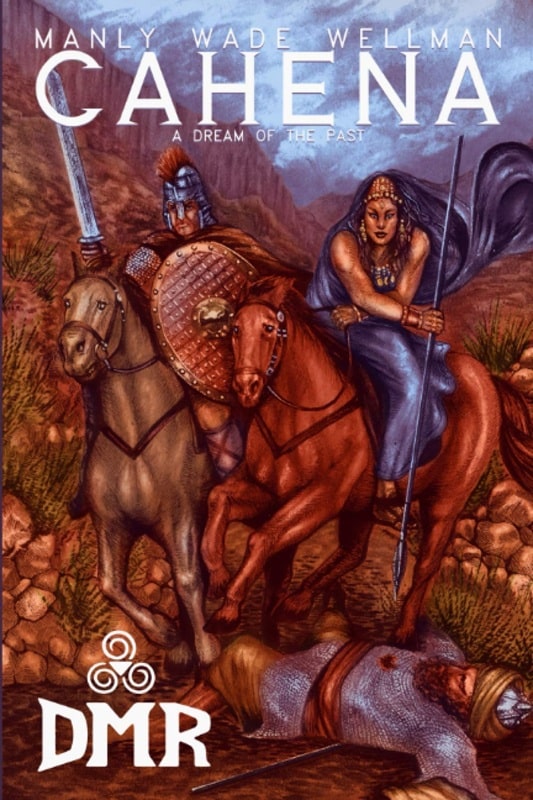
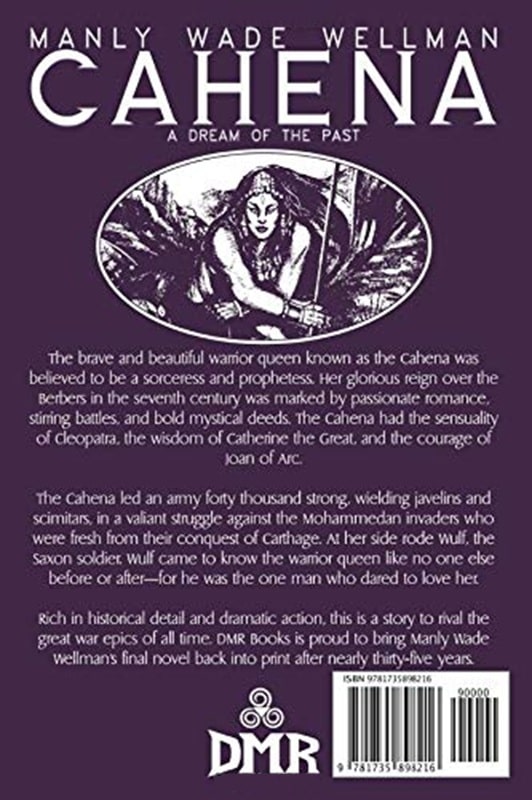
Cahena by Manly Wade Wellman (DMR Books, November 1, 2020). Cover by Lauren Gornik
I’m hearing reports that Manly Wade Wellman’s final novel Cahena, out of print for nearly 35 years until DMR released a handsome new edition in 2020 with a striking cover by Lauren Gornik, is on the verge of going out of print again.
Cahena is an overlooked gem in Wellman’s distinguished catalog. A historical novel with fantasy elements, it tells the tale of the legendary Berber queen who lived in the 7th Century in North Africa, and led her people against the Romans and later Muslim invaders. The Cahena, as she was known, was said to be both a sorceress and prophetess, and she led an army forty thousand strong in a valiant struggle to save her beleaguered people.
DMR’s rights to the book expire this month, and at the end of May it will not longer be available. Morgan Holmes says that with this final novel, “Wellman went out on top.” If you’re a Wellman fan, or a fan of quality adventure fiction, grab a copy while you can. Don’t wait another thirty-five years for the next reprint! Order directly from DMR Books here.
The Wycherleys (by Annaliese Avery)
Young Adult Fantasy / Romantasy
At the age of 17 Aurelia should be entering magical society and finding a match, but 150 years earlier her Mathilde Wycherley was cursed and since then the curse has travelled down through the generations…and it has landed on Aurelia. She is a pariah, not a single witch will join with her and without a “tether” her magic will fade away.
Jules Nightly is a descendent of the witch who cursed Mathilde but desperate times call for desperate measures and in an effort to hold onto her magic without a tether Aurelia enters into a forbidden bargain with him.
––––––––––––––––––––––––––––––––––––––––––––––––––––––––––––––––––––––––––––––
Fans of Morrigan Crow (The Tales of Morrigan Crow) or Leovander Loveage (Sorcery & Small Magics) will love this book. I hesitate to say this but it’s another book for the Harry Potter refugees. If you need a little magic in your life, this is your book.

The Writer and the Boycott
 Image by Niek Verlaan from Pixabay
Image by Niek Verlaan from Pixabay
Good afterevenmorn!
Well, I’m talking boycotts again, as there is a lot of it going around. And they are absolutely kicking up all kinds of dust. This is great – making your voice heard with the only thing these companies seem to understand; their bottom lines. It’s not so great if you’re an innocent writer just trying to make a living who happens to be caught in the crossfire.
Some few writers like myself are trying to divest from unethical companies (I’m not going to name them, but we all know, right?). But we are quite few, and it’s only, at least in my case, quite a light boycott. My books are still available on sites I’d rather no be on, as I want to offer something for those readers who have no choice but to use that site. That’s the unfortunate thing a near monopolies like this. Some folks have no other option. I do have my books available in other places, too, and encourage folks to buy there instead if they can.
It is an unfortunate truth that writers are largely stuck with these behemoth companies. Many self-published or small press authors make (or made) quite a decent living selling through these companies, sometimes exclusively. Good for them, honestly. That’s great! Less great now, however. Buyers, you see, are also boycotting these large companies. And that spells trouble for writers.
 Image by Лариса Мозговая from Pixabay
Image by Лариса Мозговая from Pixabay
I’ve seen more than one post on social media of writers reminding readers that these big companies don’t really feel their absence, but we writers absolutely do. And they’re not wrong. When people stop buying books from one of the largest sellers of books, the folks who depend on that site to sell feel it first and hardest.
It’s not a an easy spot to be in. I’m incredibly proud of everyone who are now putting their feet down and refusing to give money to sites, and the people behind these sites who are actively making the world a harder place to be in. I’m also feeling for those who were making their livings by selling on the very sites that people are actively avoiding. It’s a tough situation all around.
 Image by PDPics from Pixabay
Image by PDPics from Pixabay
Before we go on, I do want to make a giant caveat to what I’m about to say next. I don’t make a living selling books on these sites. I don’t make a living selling books period. I’m a terrible marketer, and perhaps a mediocre writer, so I don’t make a living selling books. I’d really like to, and perhaps one day I’ll get there, but I do not currently. I work full time and am scraping by without having to rely on book sales. Everything I say here will probably feel hollow for those who are currently suffering for those who are caught in this fight.
With that said, I remain firmly on the side of the boycotters. I am also boycotting as much as I can. Book purchases are now made at the bookstore nearest me. It’s not always convenient, but a half hour walk to the shop is something that I’m willing to do in order to avoid using these sites. I don’t think readers should be guilted into abandoning their causes. I do think it’s up to us as writers to try and adapt to the changing landscape. There are a couple of ways to do this. Probably more, but if I do more than two, I’ll be writing this forever.
 Do not put all your eggs in one basket.
Do not put all your eggs in one basket.Image by Gerald Friedrich from Pixabay
The most important thing I think writers can do currently is diversify
Some sites have huge incentives for exclusivity. Make them the only site your book can be purchases or read from, and you get a bigger cut of the profits. It can be incredibly enticing. If possibly, avoid that temptation and put your books up on multiple sites – including your own. There are a lot of ways to create an online shop and start selling direct. It does require a lot more marketing work, as discoverability is a huge issue here.
But I do know book shoppers often are exposed to the marketing of these big sites, and then go hunting to see if the author is selling direct. This is especially since folks are being much more selective about where they source their goods and with whom they spend their money.
There is a further downside, and that is how bestsellers are counted. Personal sales don’t usually count towards the numbers. But if you care more about earning a living than making lists, then it’s not that much of an issue.
Plus there are other bookselling sites where you can sell, and those numbers will count.

Another thing to consider is a subscription model. This isn’t instead of diversifying, but in addition to. For those who are unaware of what this model means, essentially, that people will pay a small amount monthly in exchange for some exclusive content. There are quite a few companies that offer this service (for a cut, of course). The two big ones that I’m aware of are Patreon and Ko-Fi.
For both of these sites, you can set the monthly amount, and even charge different amounts for increasingly awesome exclusive stuff. This tiered subscription can be set to whatever amounts you wish. I know some folks who have subscription tiers at $20.00 a month or more. If you like, you can limit the number of those subscriptions, so you’re not spending all your time trying to fulfill your subscription obligations instead of writing. So perhaps you have a tier at $50.00, in which you provide a monthly handwritten letter, and an automatic awesome loot box with every book release a month, but only two slots for that tier. So you don’t end up spending a tonne of money and time getting those book boxes together and writing letters. The great thing about this is that you can structure it whatever way you want.
I have a Ko-Fi page (obligatory link here. That felt icky. Let’s move swiftly on). I chose it because they also offer an online shop, which has the option of selling to the general public or to one or more of your subscription tiers exclusively, and even an option to accept commissions if you want.
I am very limited on time and ability, as I work full time, so I know I don’t have a lot of time to create for my subscribers. For that reason, I’ve set the monthly amount very low ($1.00), and have only one tier. Subscribers get exclusive blog posts. They will be the only ones able to purchase the special editions of my books, when I get the time to create them (a special edition of The Dying God & Other Stories is currently in the works, with a subscriber exclusive cover and five all new full-colour illustrations). They also have first read of any of the serials I write. They were the first to read The New Haven Incident, and will be the first to read The Bear when I’ve finished writing it. They also get free recipes when I make something I feel is worth sharing. And I’m aiming to offer them free calendar print-outs with original artwork each year. It’s not much, because I cannot yet abandon the office job. Perhaps one day I will be able to, and I can start offering more to my subscribers.
I really like the functionality of Ko-Fi, and now use it as my shop, saving me the costs of hosting my own on my website. Other people choose Patreon because it has other features they find more convenient. I am a fan of being able to set a post as exclusive for a time period of your choosing before it becomes public. You have to do that manually on Ko-Fi.
 Image by christian schwartz from Pixabay
Image by christian schwartz from Pixabay
This isn’t to say that doing either of these things will go well for a writer. I am evidence of that. I don’t sell many books, and I don’t have many subscribers. Fortunate, then, I have full-time work, or I’d be in real trouble. I know that not everyone is fortunate enough to be in that position.
It’s a difficult journey, this writing thing, and should not be embarked on lightly. Boycotts are not making it any easier. We must muddle through as best we can in the weird, unstable world we find ourselves in. The important thing is not to give up. We need stories, perhaps now more than ever. So keep trying to find your way through. I’m here cheering you on. We can do it.
When S.M. Carrière isn’t brutally killing your favorite characters, she spends her time teaching martial arts, live streaming video games, and cuddling her cat. In other words, she spends her time teaching others to kill, streaming her digital kills, and a cuddling furry murderer. Her most recent titles include Daughters of Britain, Skylark and Human. Her serial The New Haven Incident is free and goes up every Friday on her blog.
Book review: Esperance by Adam Oyebanji

Book links: Amazon, Goodreads
ABOUT THE AUTHOR: Adam Oyebanji was born in Coatbridge, in the West of Scotland, and is now in Edinburgh, by way of Birmingham, London, Lagos, Nigeria, Chicago, Pittsburgh and New York. After graduating from Birmingham University and Harvard Law School, he worked as a barrister, before moving to New York to work in counter-terrorist financing in Wall Street, helping to choke off the money supply that builds weapons of mass destruction, narcotics empires and human trafficking networks. His first novel, Braking Day, was a finalist for the Canopus Award.
Publisher: DAW (May 20, 2025) Length: 432 pages (Kindle edition) Formats: Audiobook, ebook, paperback
Esperance hooked me from page one and didn’t let go. I mean, how could it? It opens with an impossible murder - a father and son drown in seawater inside their 20th-floor Chicago apartment (with no water tank around, floors dry, and nail scratches on the ceiling). A dead barracuda is just lying there next to them. For me, that’s the kind of opening that demands attention, and trust me, Oyebanji knows exactly how to keep it.
All of this somehow ties to a woman in Bristol who dresses and speaks like she walked out of the 1930s Nigeria, has and builds tech that shouldn’t exist, and is on a very specific historical scavenger hunt. Yeah, I’m in.
The pacing is perfect - the short chapters told from two points of view (Detective Ethan Krol and Abi) fly by quickly thanks to the right mix of action, mystery, and those oh-crap moments where everything shifts. The sci-fi elements are there, but Oyebanji doesn’t over-explain them, which somehow makes them even cooler. I found the twists top-tier, but your mileage may vary. Anyway, just when I thought I had things figured out, nope. With that said, it’s possible some readers won’t be crazy about police procedural elements, but since I love them, I had no issues here.
I also loved the dynamic between Hollie and Abi. Hollie is basically most of us. Abidemi, on the other hand, is an enigma - charismatic, dangerous, and inhumanly brilliant. Their relationship had the odd but interesting energy, and I loved how their interactions went from trust and suspicion and back.
Even the antagonist had motivations that actually made sense. There’s logic to their actions, even if their methods are, let’s say, a lot.
By the time I hit the final act, I was all in. The twists come fast, the revelations hit hard, and the ending is equally satisfying and unsettling. I feel it’ll stick with me. If you’re into Blake Crouch-style thrillers, Neal Stephenson-esque tech mysteries, or just a smart, fast-paced story that refuses to be predictable, Esperance is absolutely worth your time.
THE MARTIAN CONTINGENCY by Mary Robinette Kowal (Lady Astronaut #4)
Book Review: The Devils by Joe Abercrombie
I received a review copy from the publisher. This does not affect the contents of my review and all opinions are my own.
Mogsy’s Rating: 3.5 of 5 stars
Genre: Fantasy
Series: Book 1 of The Devils
Publisher: Tor Books | Macmillan Audio (May 13, 2025)
Length: 576 pages
Author Information: Website | Twitter
I feel like I read a different book than everyone else. Despite the raving reviews for Joe Abercrombie’s The Devils, I personally walked away with far more fixed feelings than I expected. Don’t get me wrong—there’s plenty to admire in this irreverent dark fantasy adventure, and as a longtime fan of the author, I was happy with the colorful cast of memorable characters and the gloriously brutal action. That said, something didn’t quite click in place for me. As folks tend to say, I liked it, but I didn’t love it.
Set in an alternate version of what feels like medieval Europe, the book opens on a politically tumultuous time. Brother Diaz is a devout yet somewhat sheltered monk who suddenly finds himself appointed to lead the Chapel of Holy Expediency, a secret taskforce comprised of convicted supernatural beings bound to serve the Church whenever their special talents are required. And right now is one of those times. The mission? A young street urchin named Alex, believed to be the long-lost heir to the throne of Troy, must be safely escorted across a war-torn landscape to her rightful place as Empress so she can unite the fractured church before the whole world burns down around them.
The crew of condemned misfits include Jakob, a centuries-old immortal driven by a stoic dedication to the task at hand; Sunny, a mild-mannered elf whose people may be waging a war against the empire, yet manages to remain hopeful in a world that fears her kind; Vigga, a fierce and uninhibited werewolf whose volatile nature makes her both the muscle and the loose cannon on the team; Baron Rikard, an ancient vampire whose taste for decorum never fails to add a touch of civility even as the group storms its way across the continent, leaving chao in their wake; Baptiste, a slick rogue with a jack-of-all-trades skillset, bringing versatility to whatever task needs doing; and Bathazar, a cantankerous necromancer who can get on everyone’s nerves, but whose deep knowledge of all things arcane proves nothing short of invaluable.
Let’s start with what worked for me, because to be fair there was plenty. First, in true Abercrombie fashion, the characters here were all fantastic and delightfully over-the-top, with group dynamics clearly mirroring the key roles in a heist crew. What makes it even better is that each member draws inspiration from classic horror archetypes, which is especially obvious when it comes to characters like Vigga and her impulse control issues, or the very gentlemanly Baron Rikard. Each one also brings something unique to the table, whether it’s magic, brute force, or just pure charm.
However, all this does come with a caveat. For although the Devils are arguably the stars of this show, for me it’s the “normies” Alex and Brother Diaz who form the heart and soul of the novel, because they are the only ones not defined by familiar archetypes or playing to expectations. Like many ensemble cast stories, The Devils prioritizes leveraging group dynamics for the sake of punchy banter and gallows humor, glossing over genuine and meaningful character development. Maybe this is simply Abercrombie trying new things, and I certainly don’t begrudge him for it, but this shift is noticeably different from his earlier works like The First Law trilogy.
I was also slightly underwhelmed with the book’s middle section. While the first few chapters blew me away with a near-perfect introduction into our characters, the conflict, and the quest, this momentum proved unsustainable. The pacing began to lag, making it feel as though the story was treading water as it saved the best it had to offer for climax and conclusion. Granted, character interactions kept things engaging, but there was no longer that sense of urgency or excitement which fueled the opening act. Perhaps what the plot needed was more engaging side quests, but instead it relied too heavily upon snappy dialogue and kinetic action to carry it through to the final stretch. Paradoxically, even though Abercrombie is still the king when it comes to writing tight, brutal, heart pounding and adrenaline pumping battle sequences, the more of them we got, the more the pacing felt largely static.
In the end, The Devils is an entertaining ride, delivering an action-packed fantasy romp with a killer cast of characters and Joe Abercrombie’s signature dark, sardonic wit. It’s undeniably entertaining, and I admire the author’s willingness to cut loose—after all, this is easily the most popcorny book I’ve read from him yet. However, even after the explosive, mayhem-filled finale, I still found myself curiously ambivalent, my feelings tempered by issues like unbalanced pacing and an inability to invest in the story emotionally. Bottom line, this is by no means a bad book, but ultimately, it also wasn’t quite what I thought I was signing up for.
![]()
![]()
Review of The River Has Roots by Amal El-Mohtar
When I first heard about The River Has Roots, I was simultaneously intrigued by it and hesitant to read it. The idea of a story about Faerie and sisters based on a murder ballad appealed to me, but my only previous experience with Amal El-Mohtar’s work was a sample from the novella she co-authored, This Is How You Lose the Time War—a book that for all its awards and accolades has now failed to draw me in and demand I […]
The post Review of The River Has Roots by Amal El-Mohtar first appeared on Fantasy Cafe.
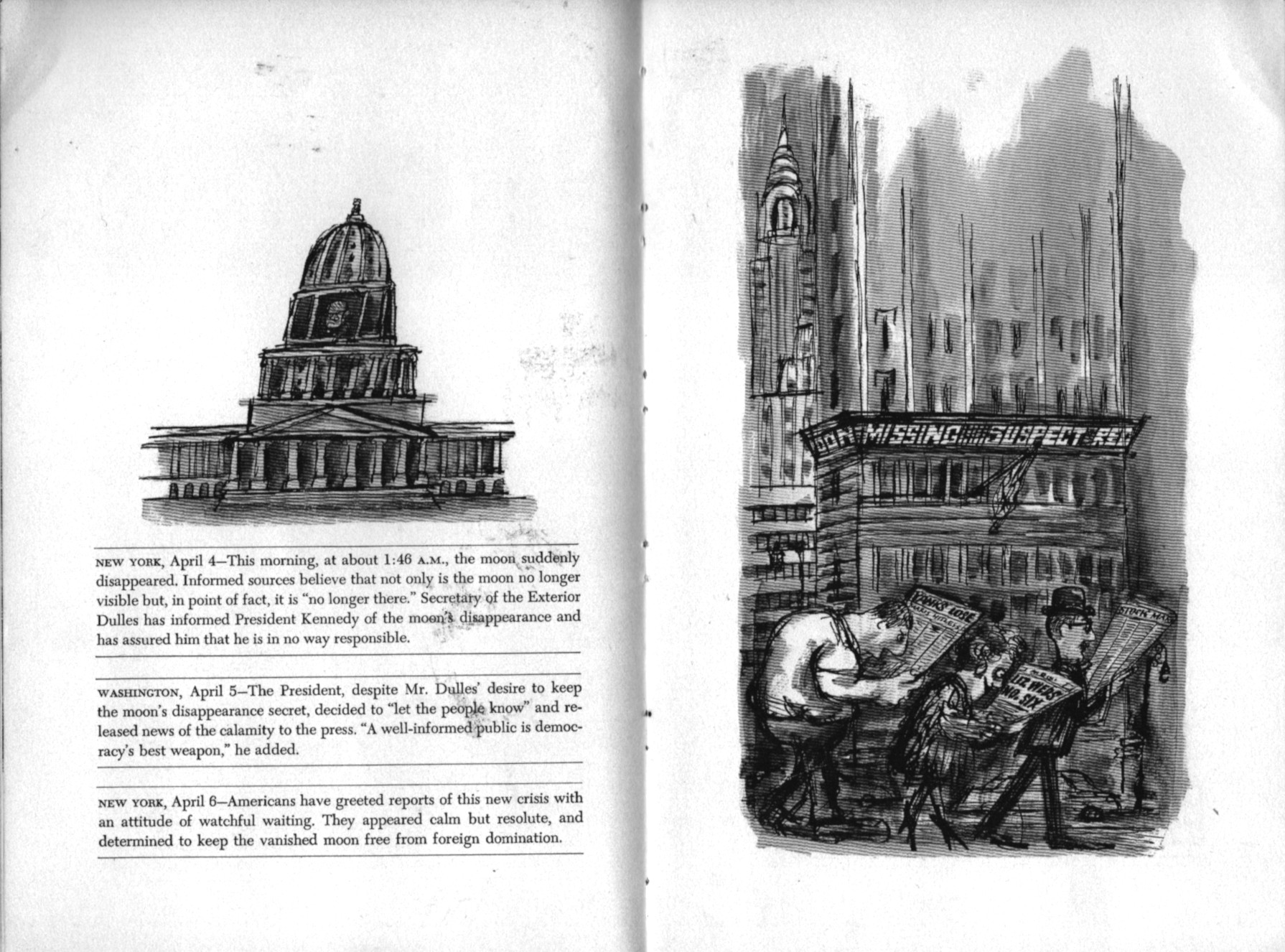

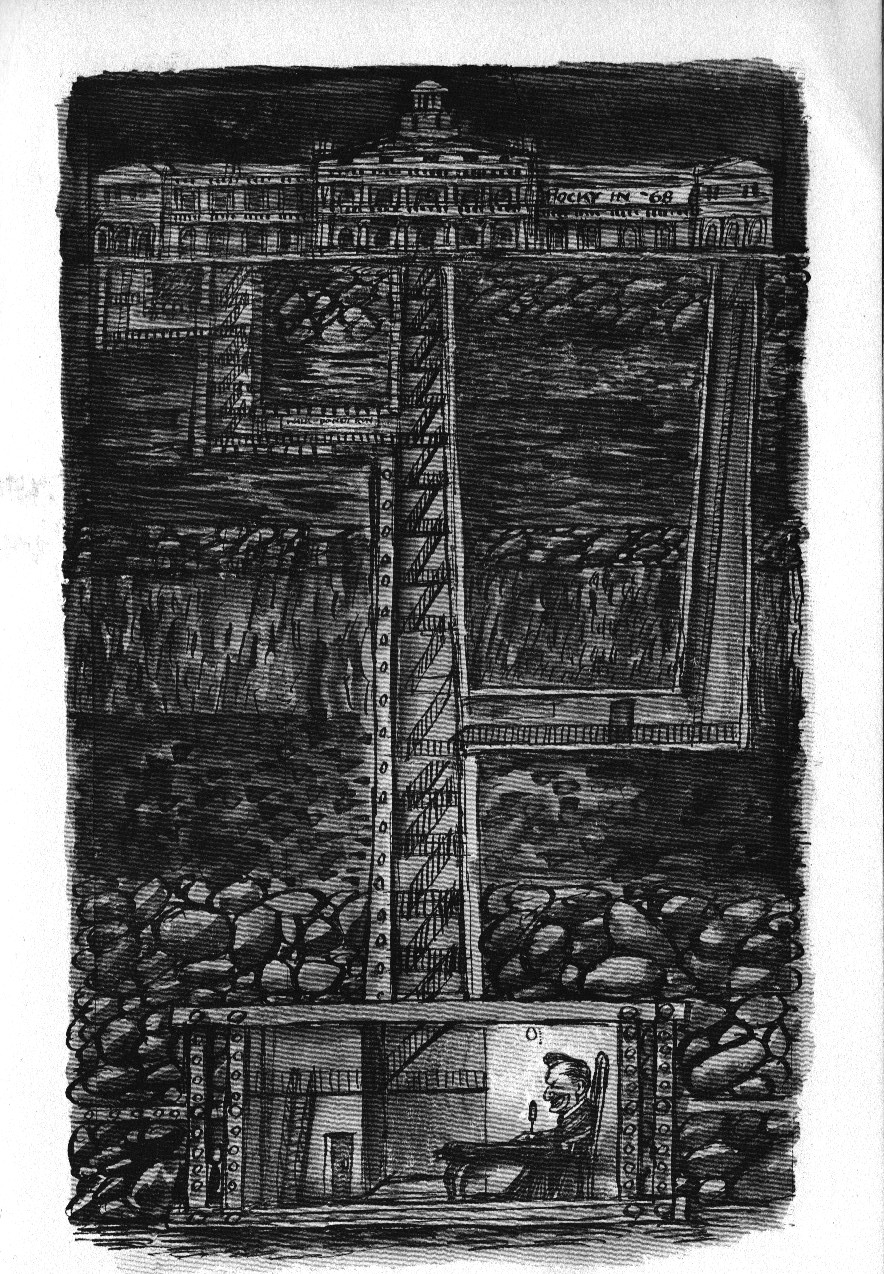

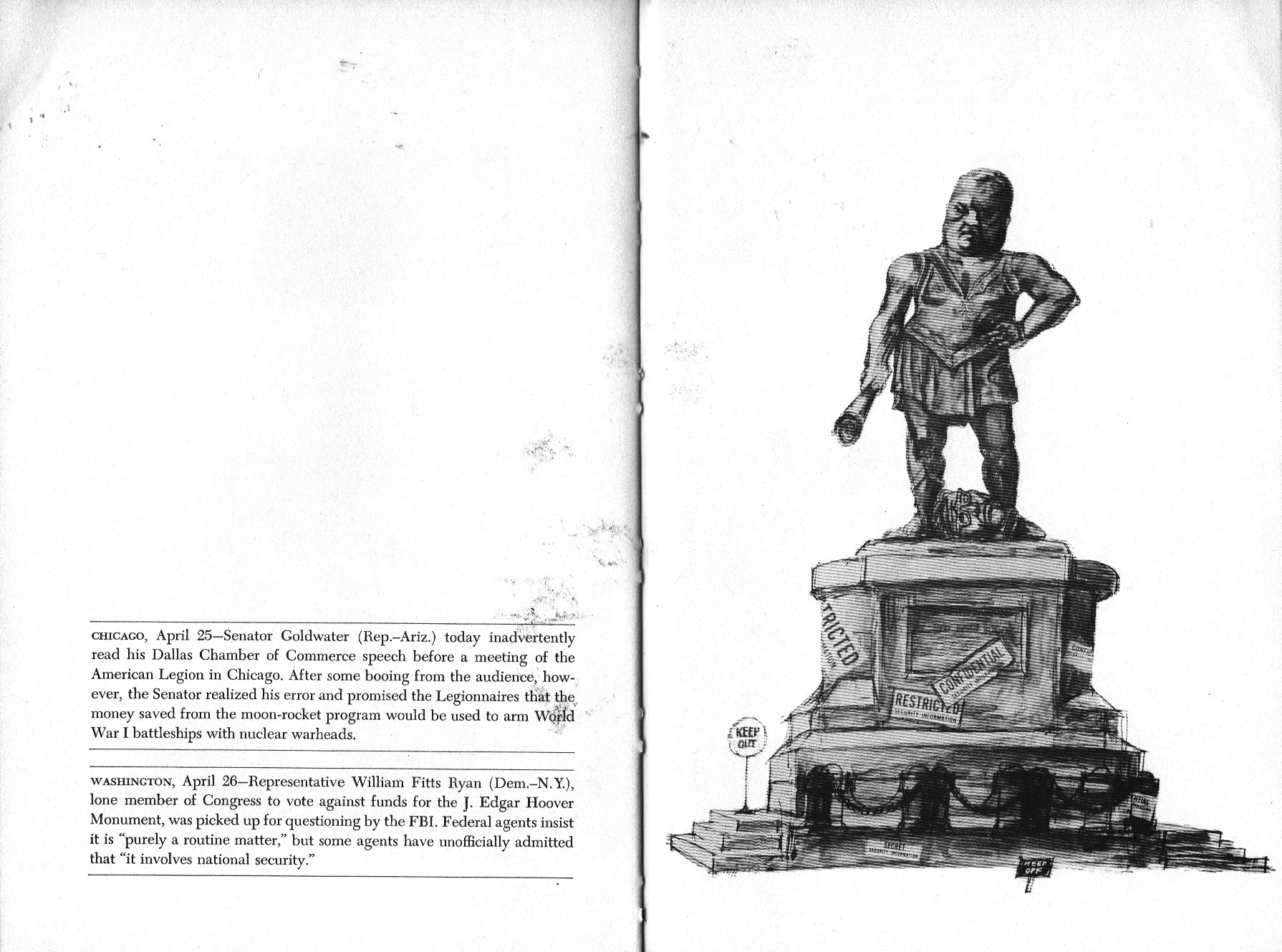

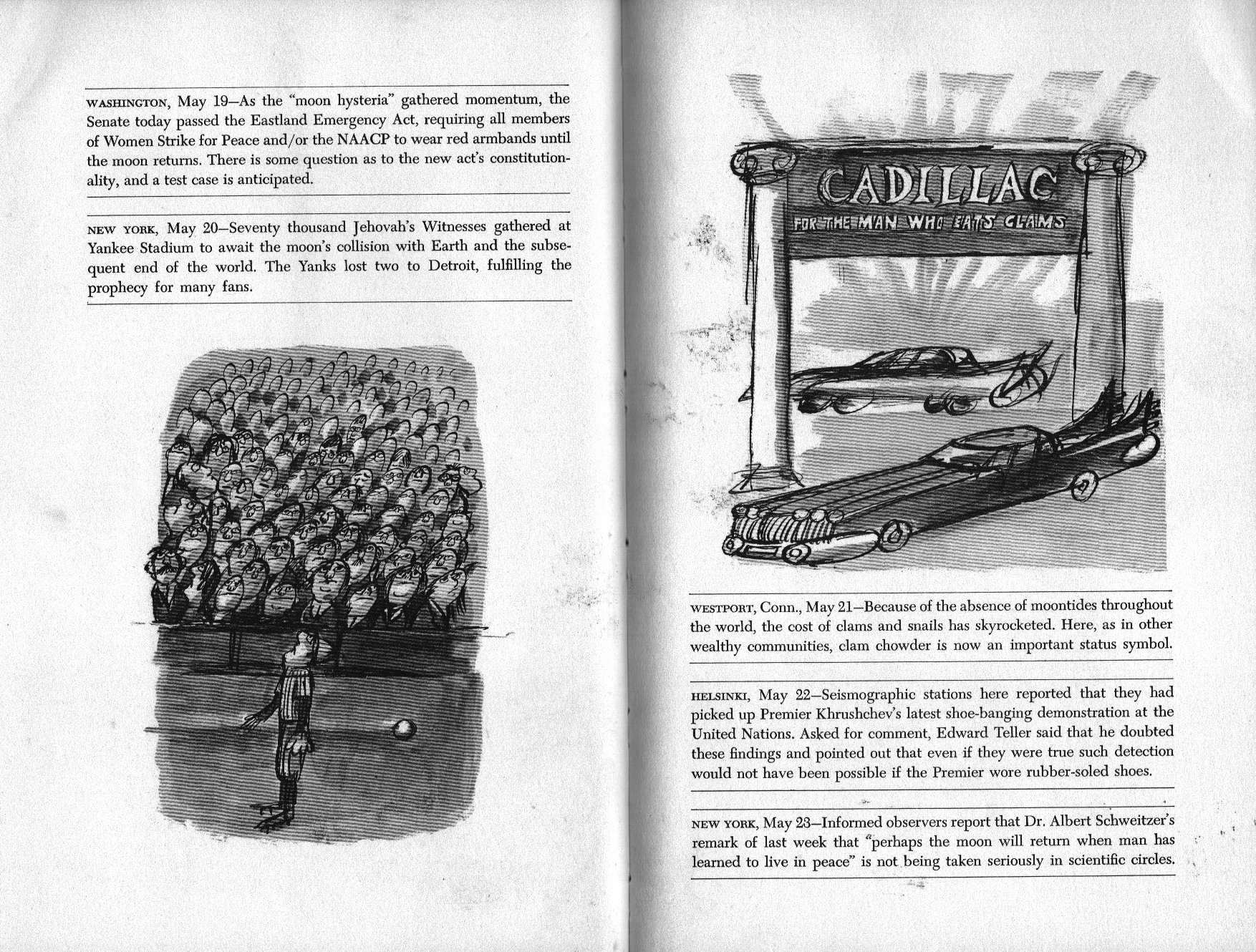
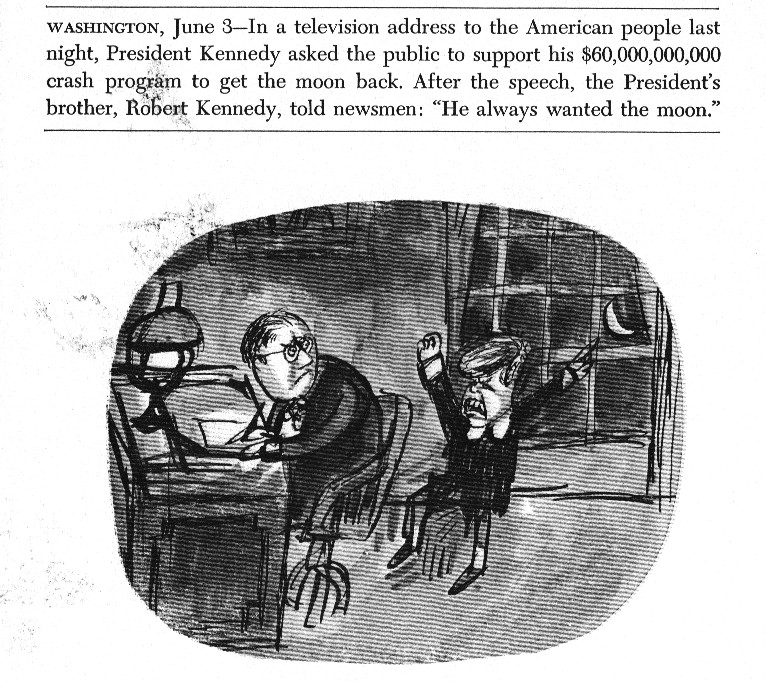
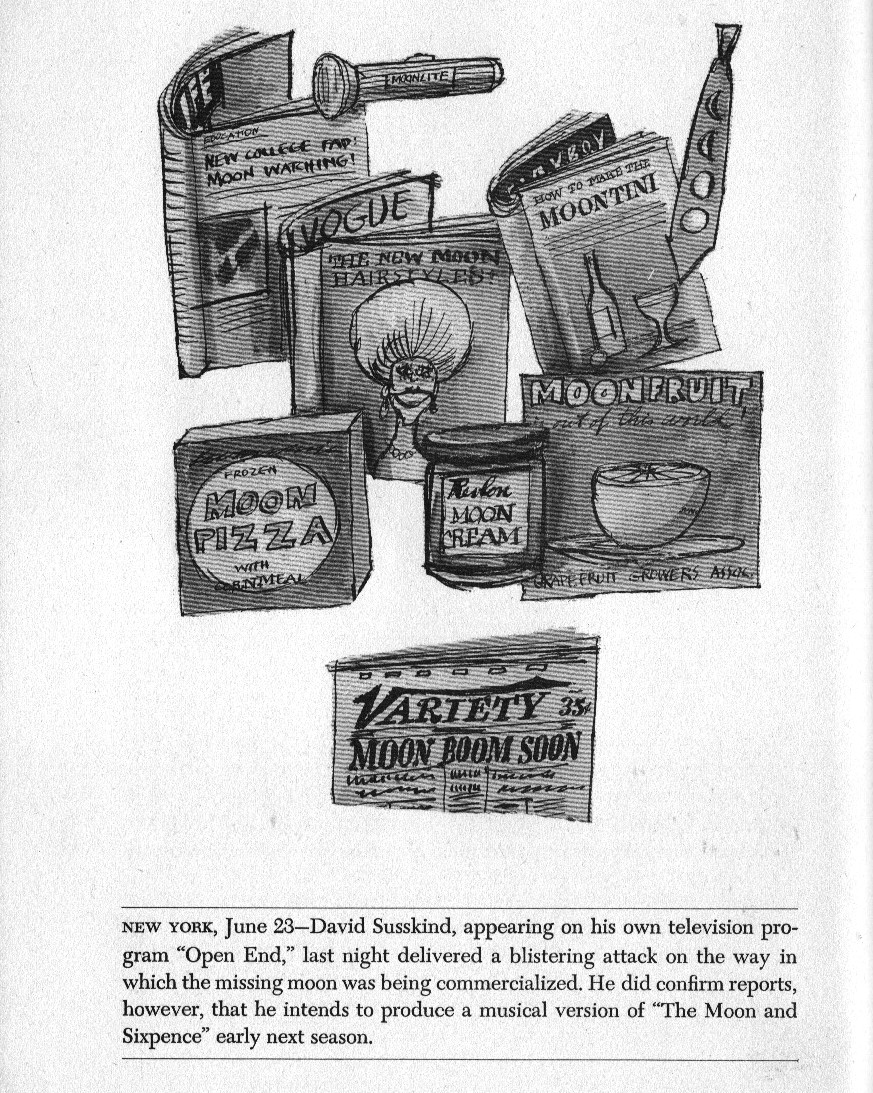
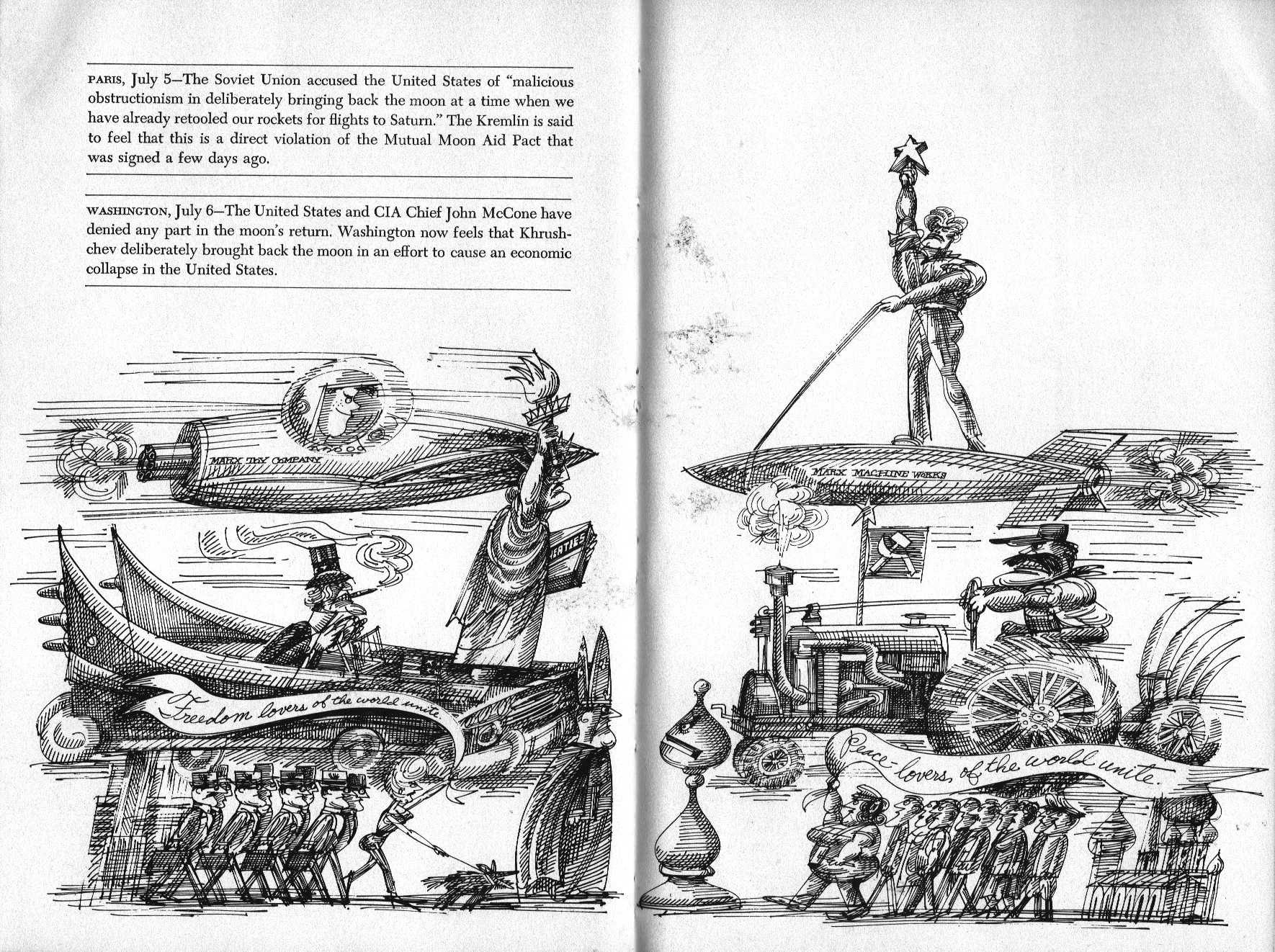
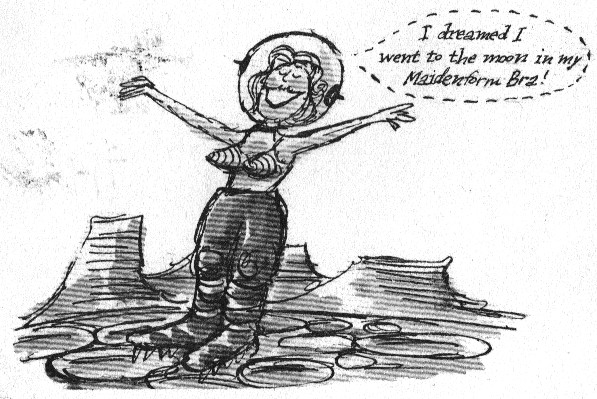



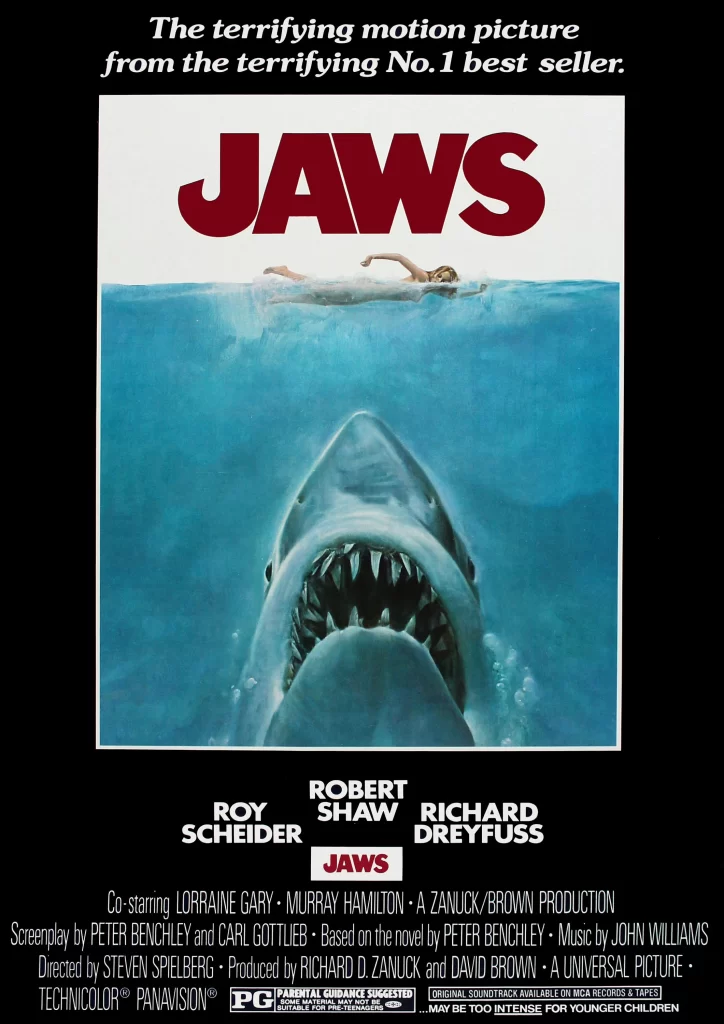
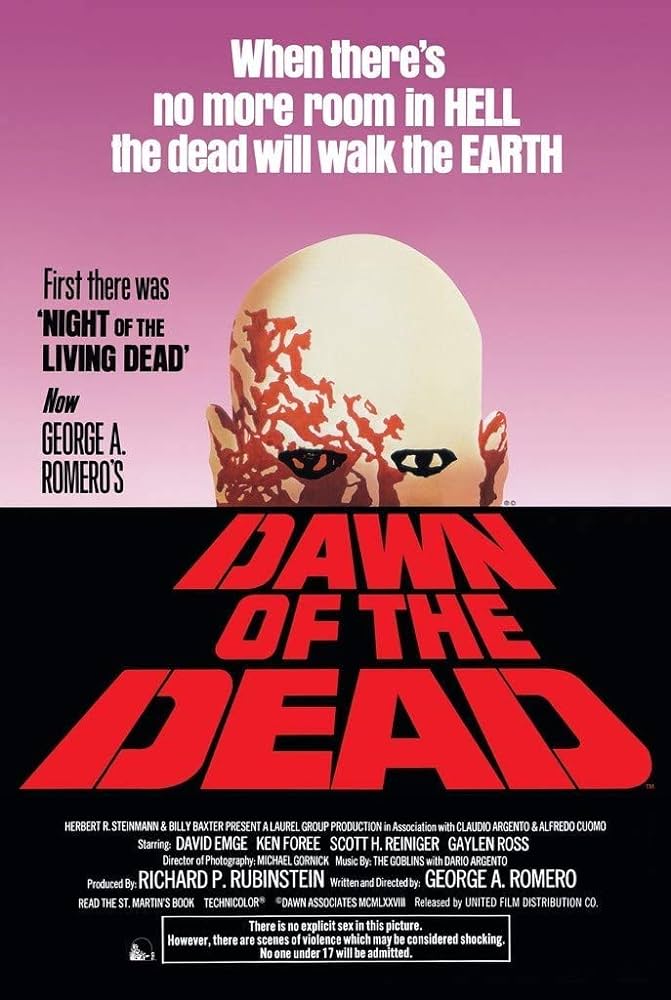
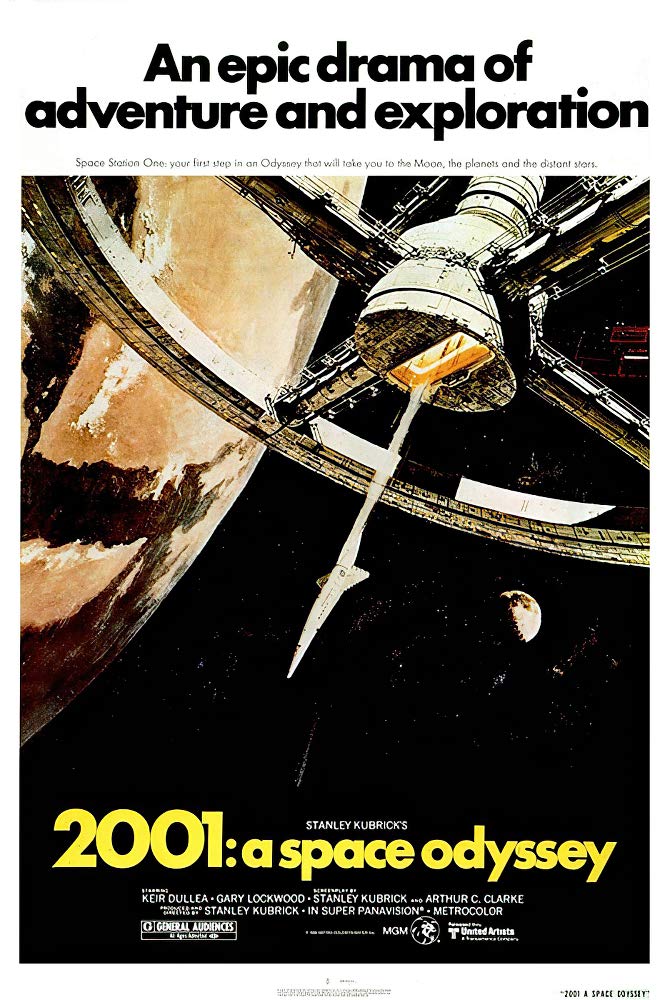
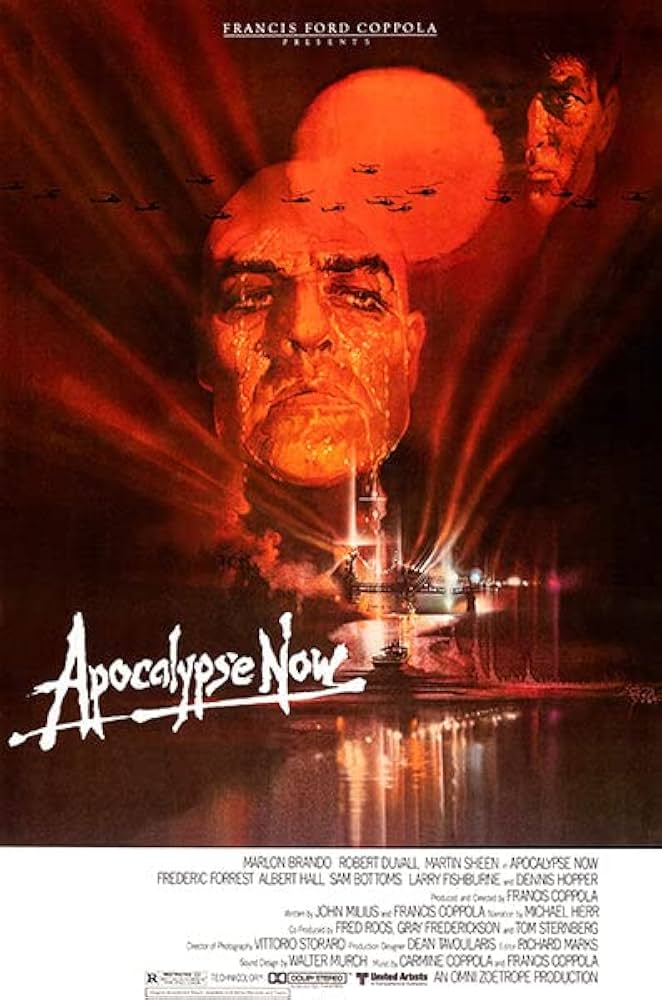
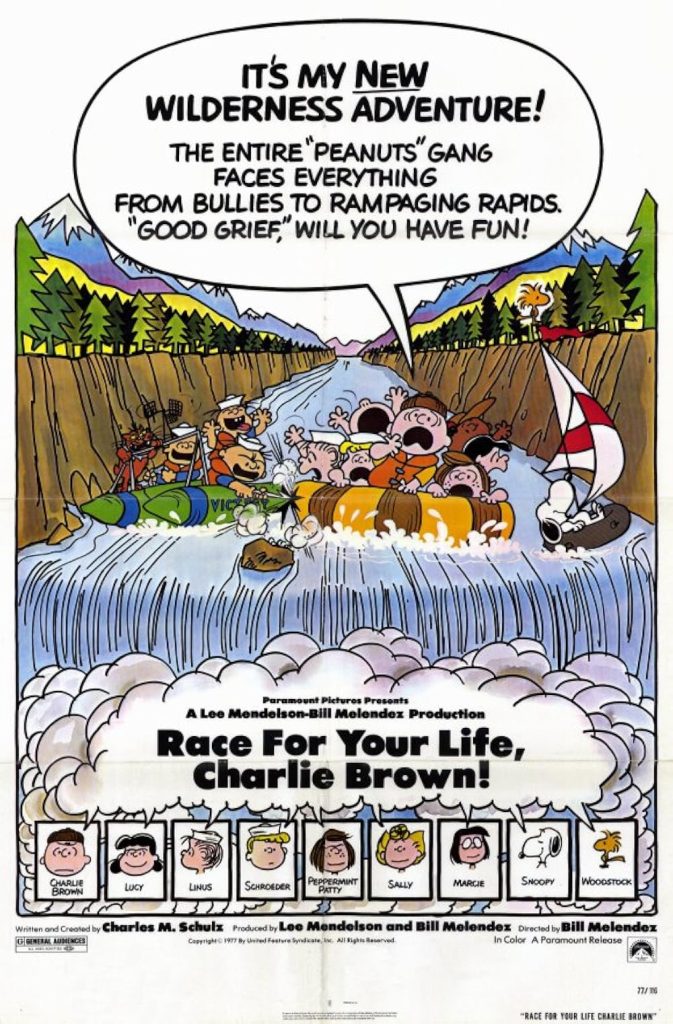



Recent comments